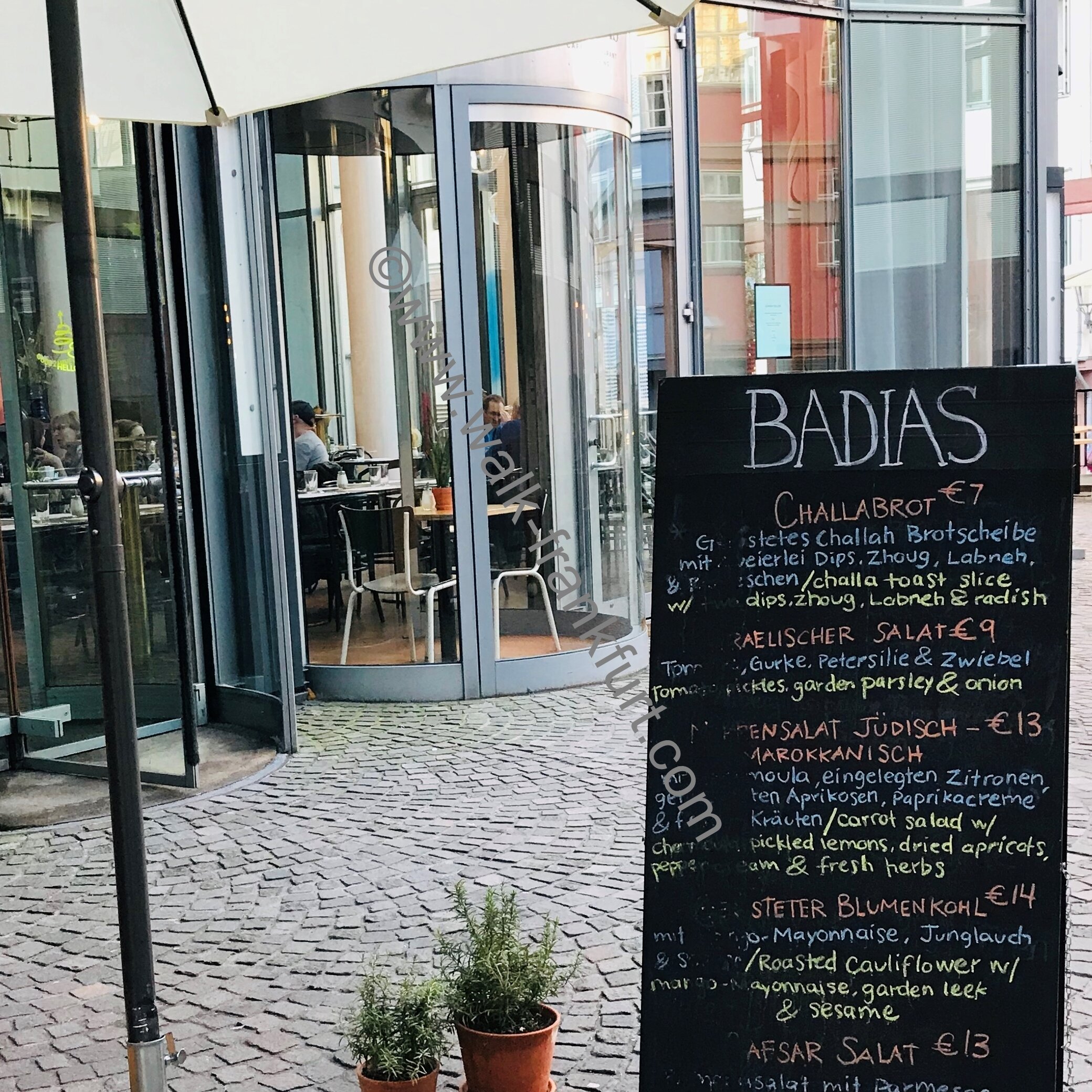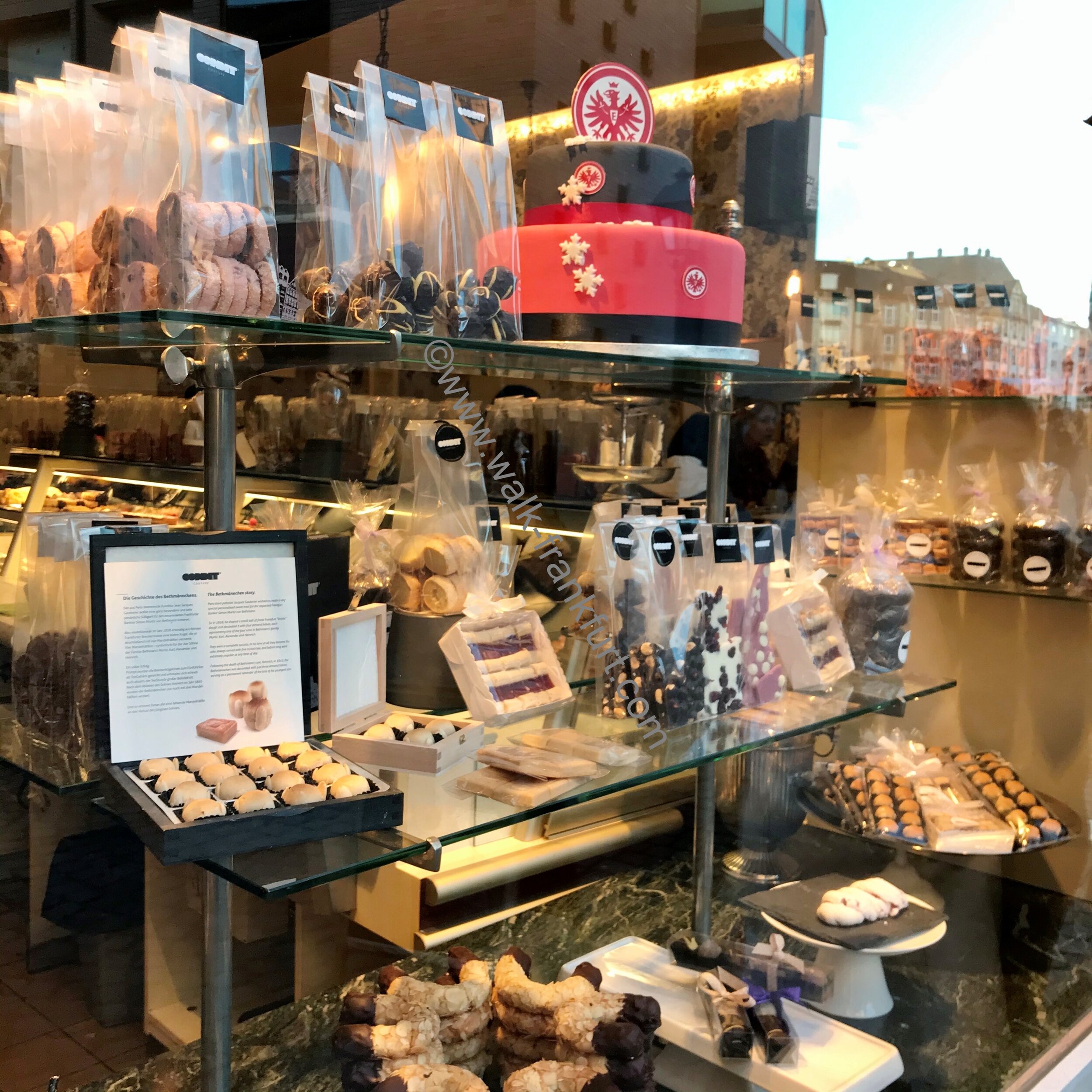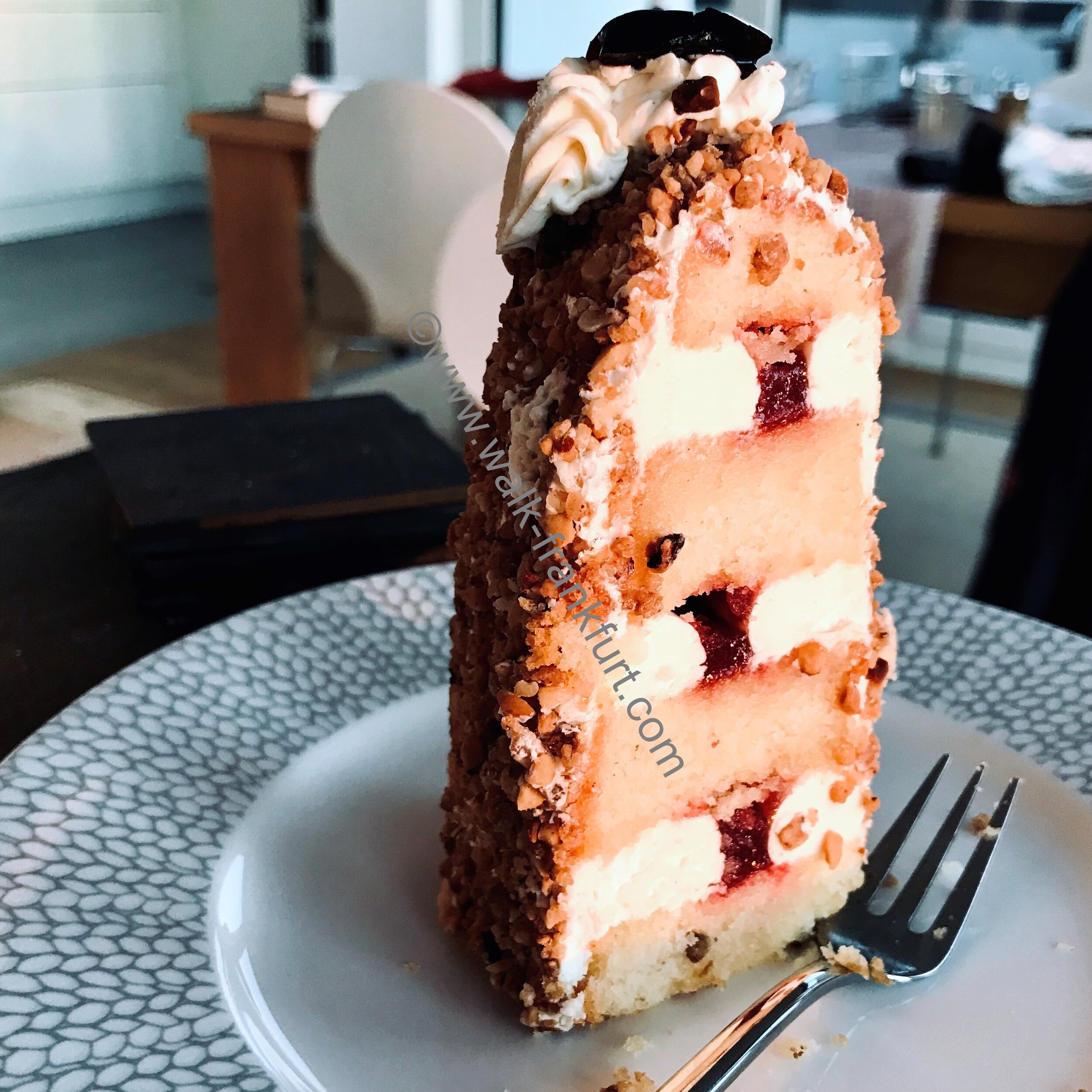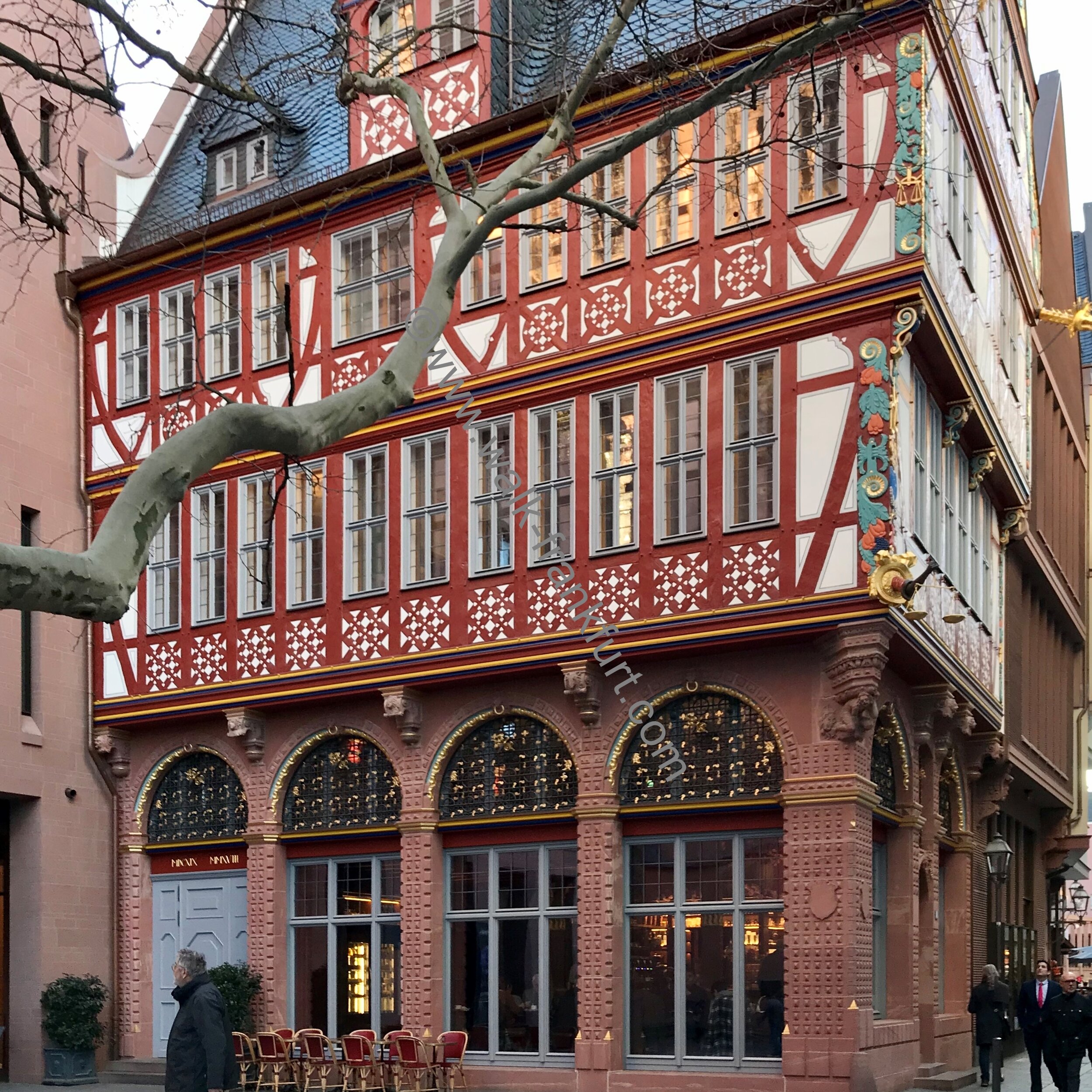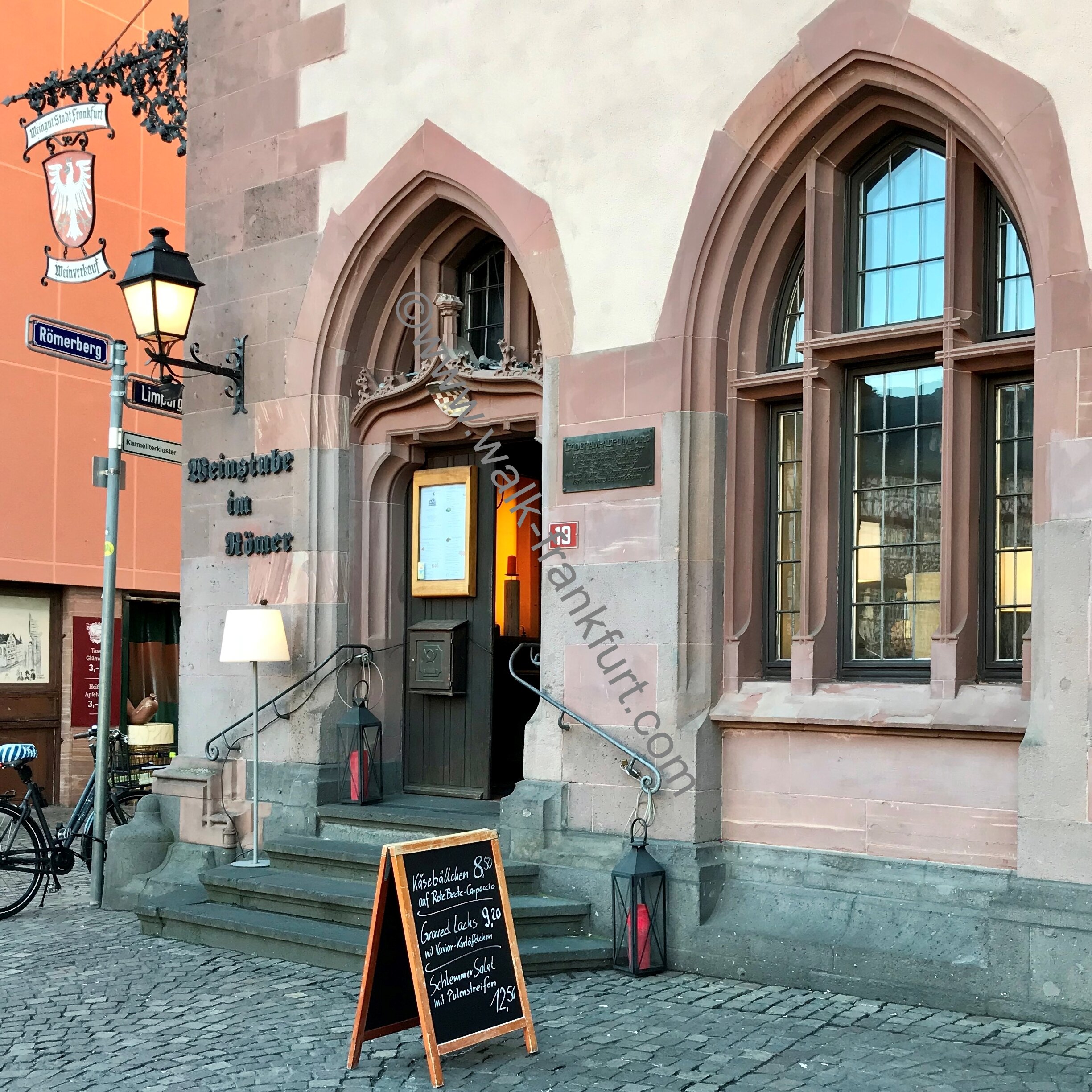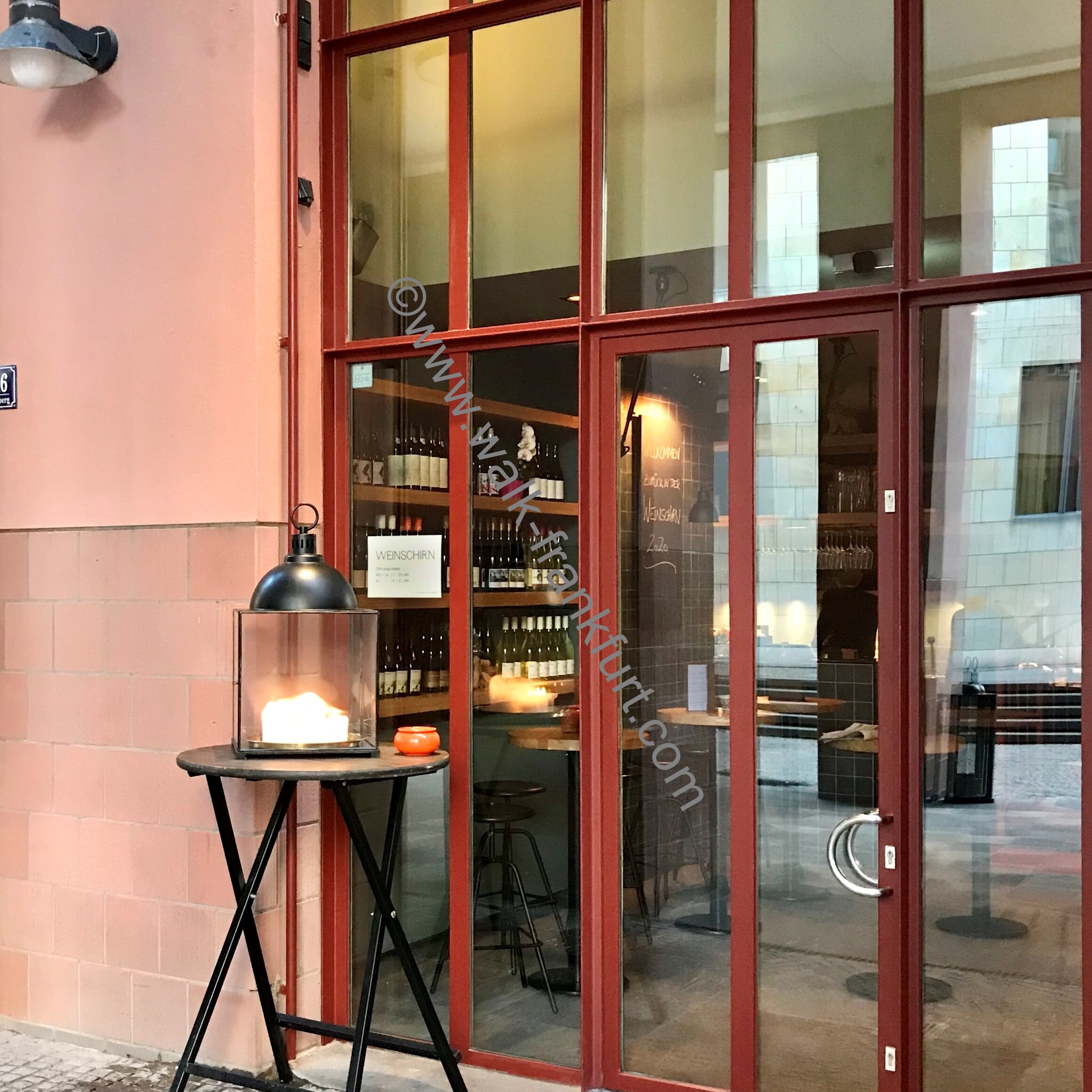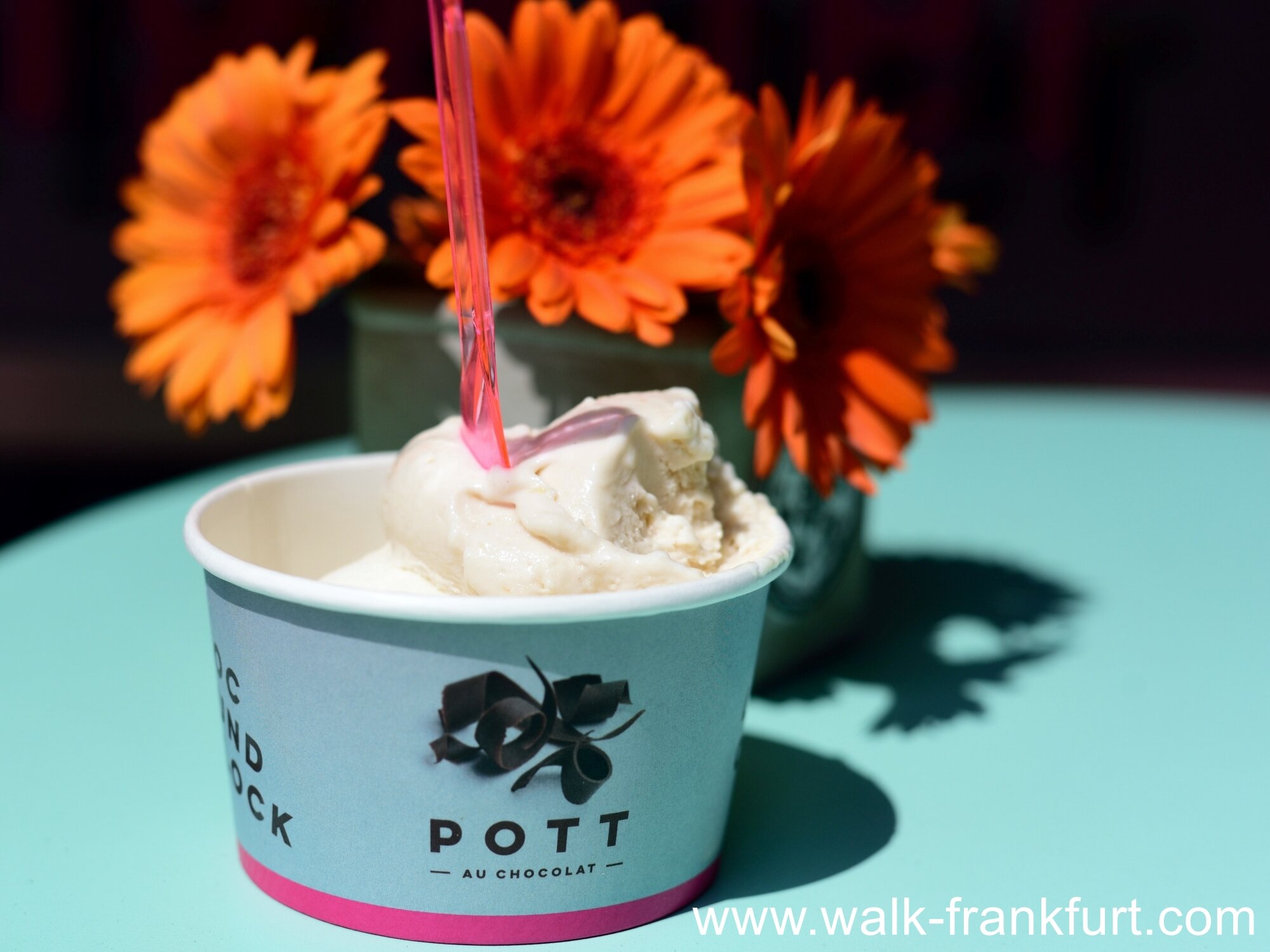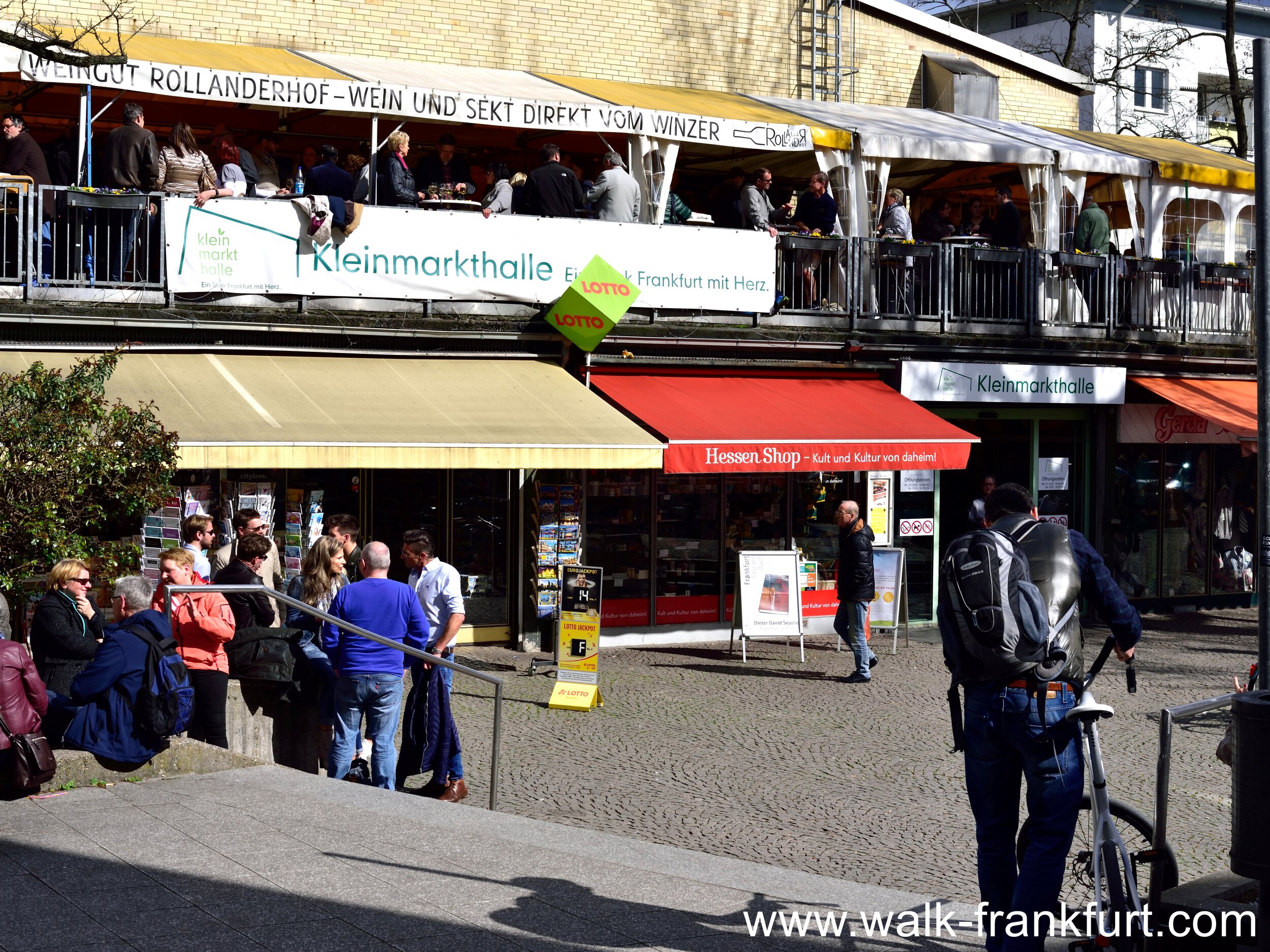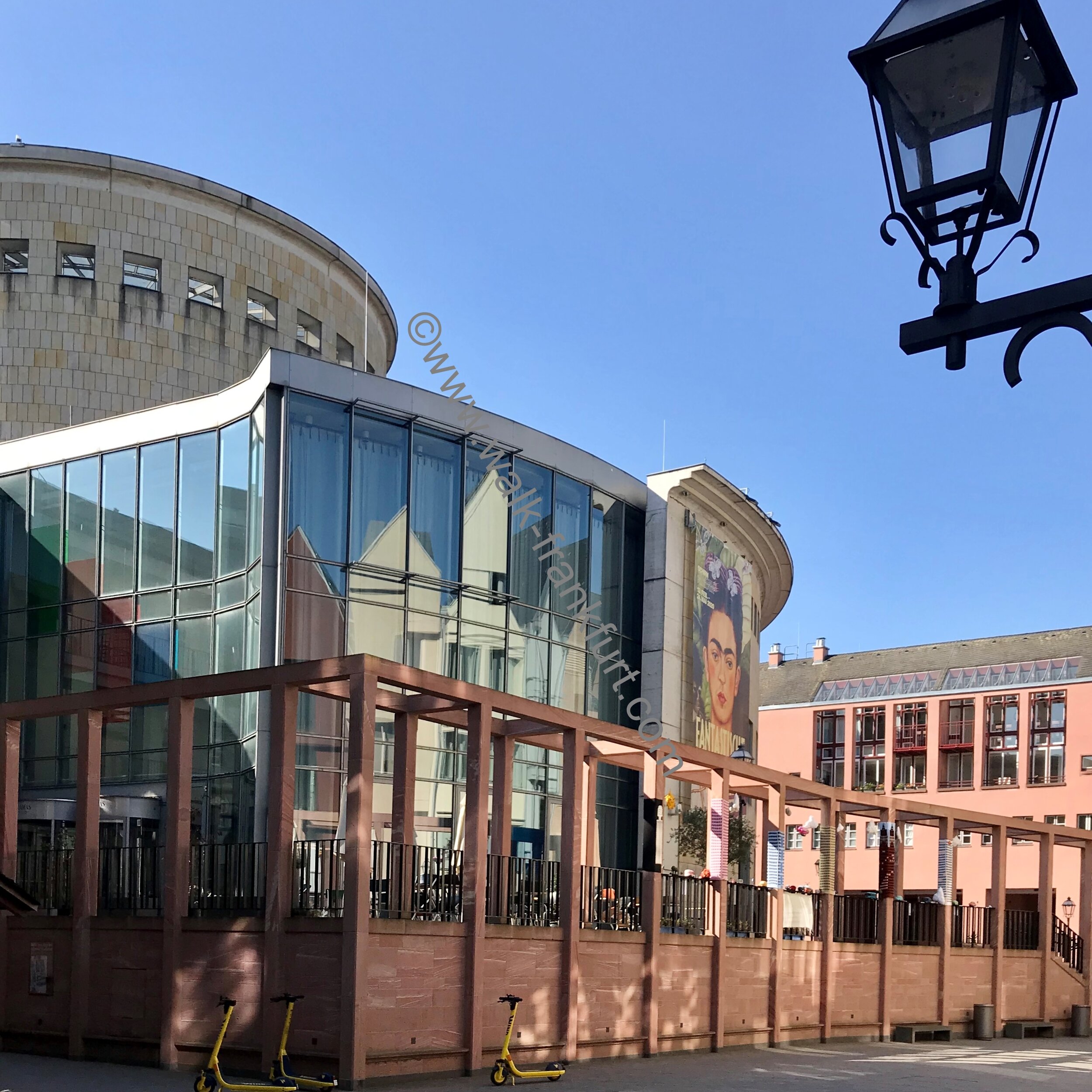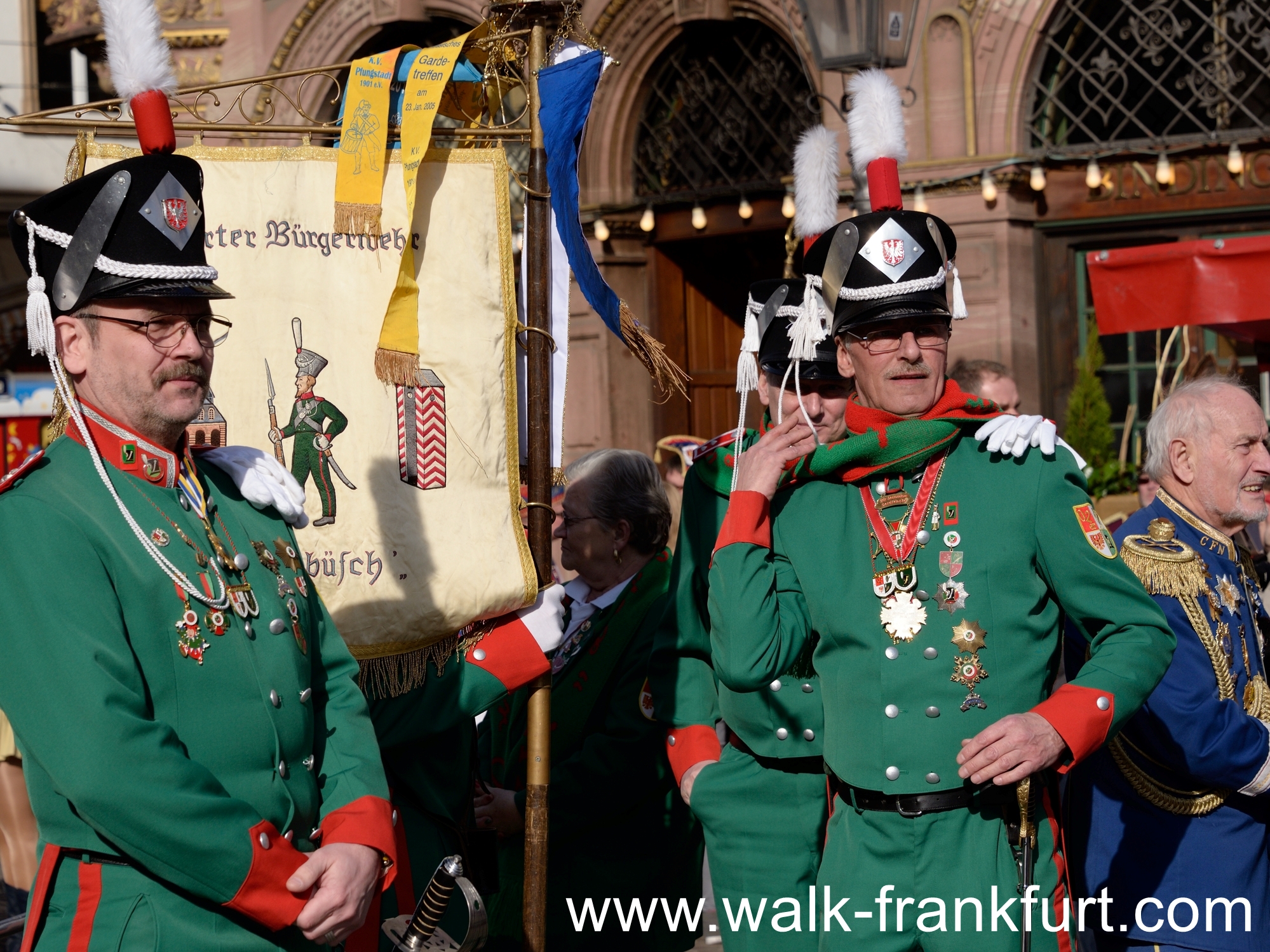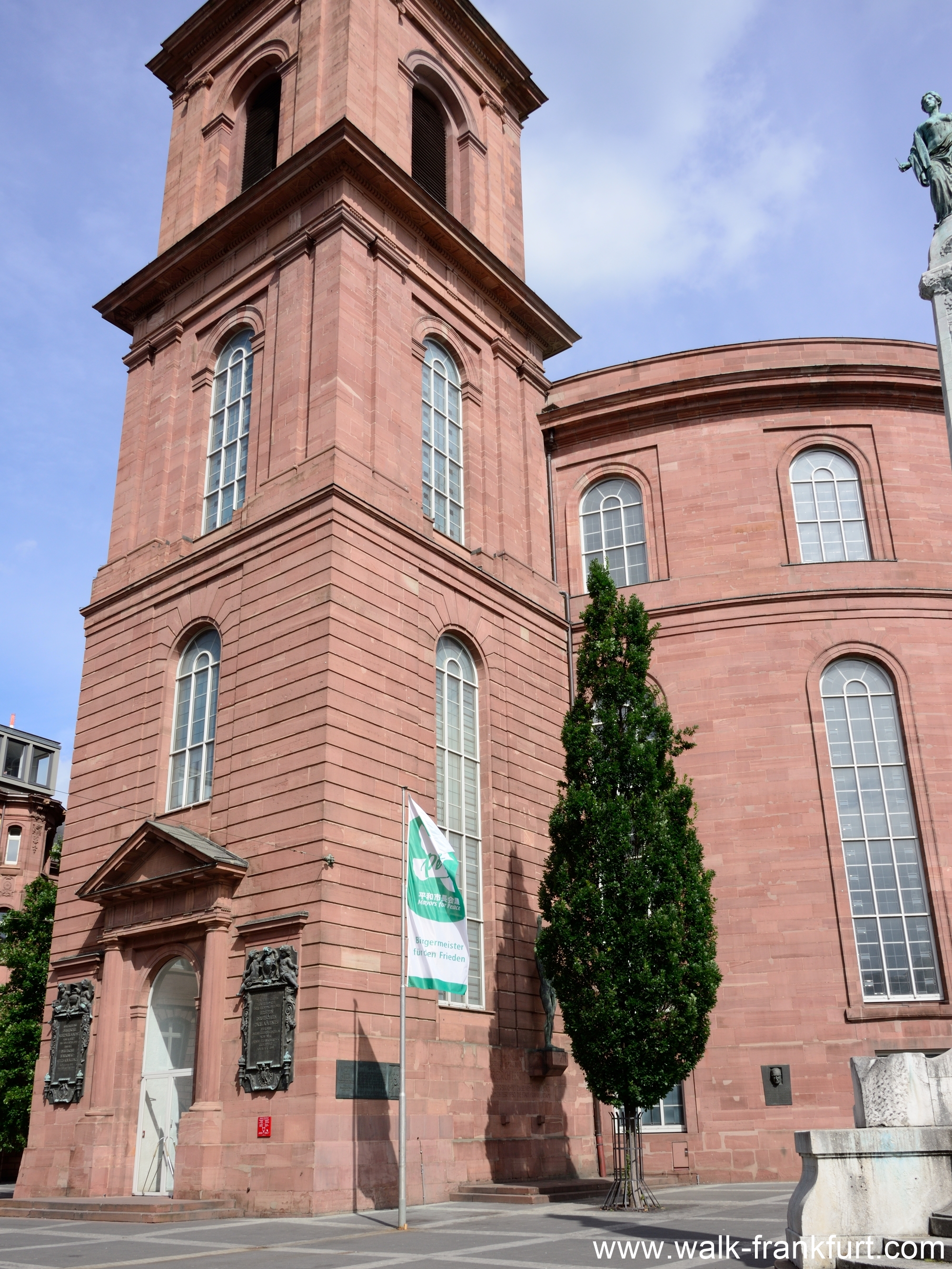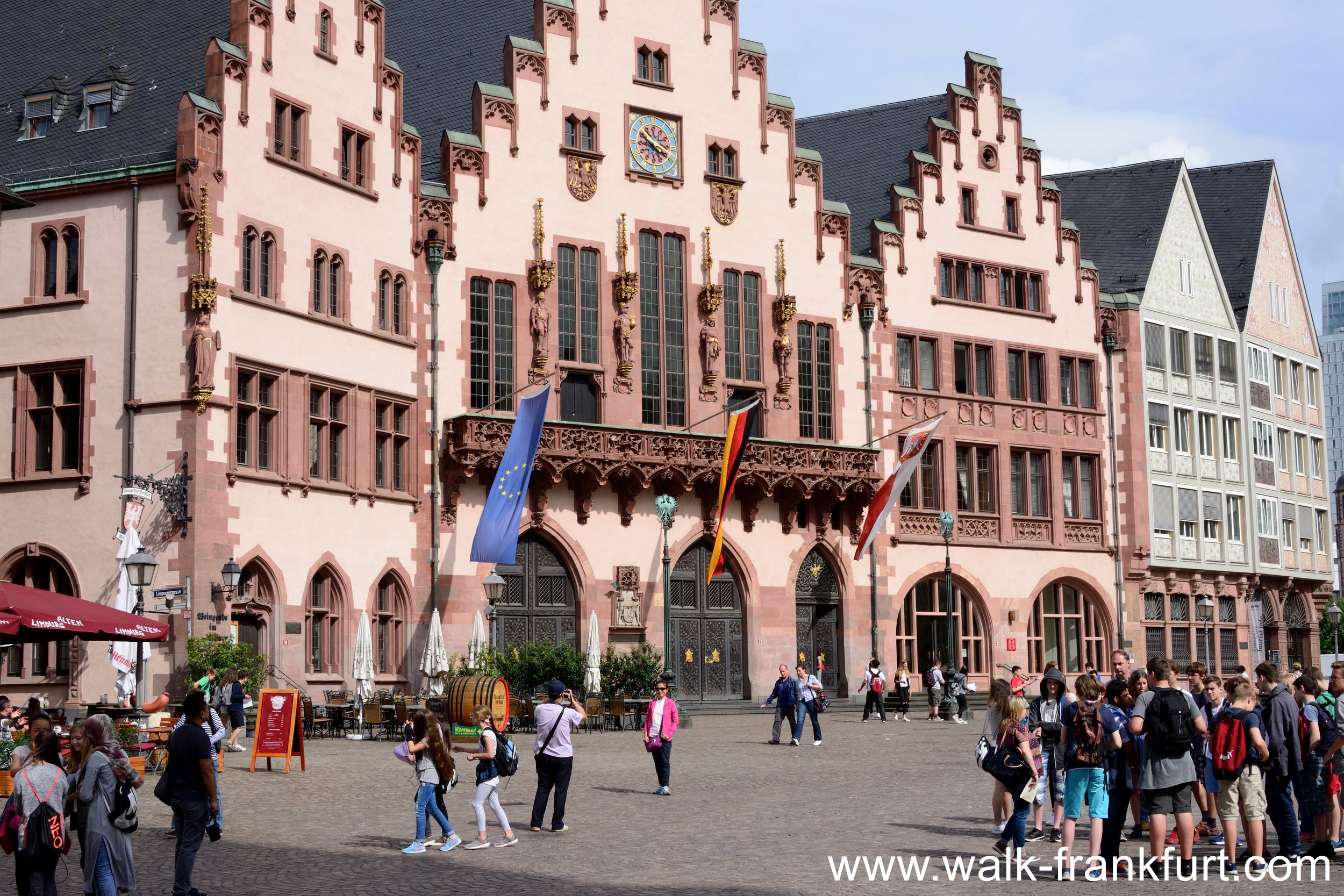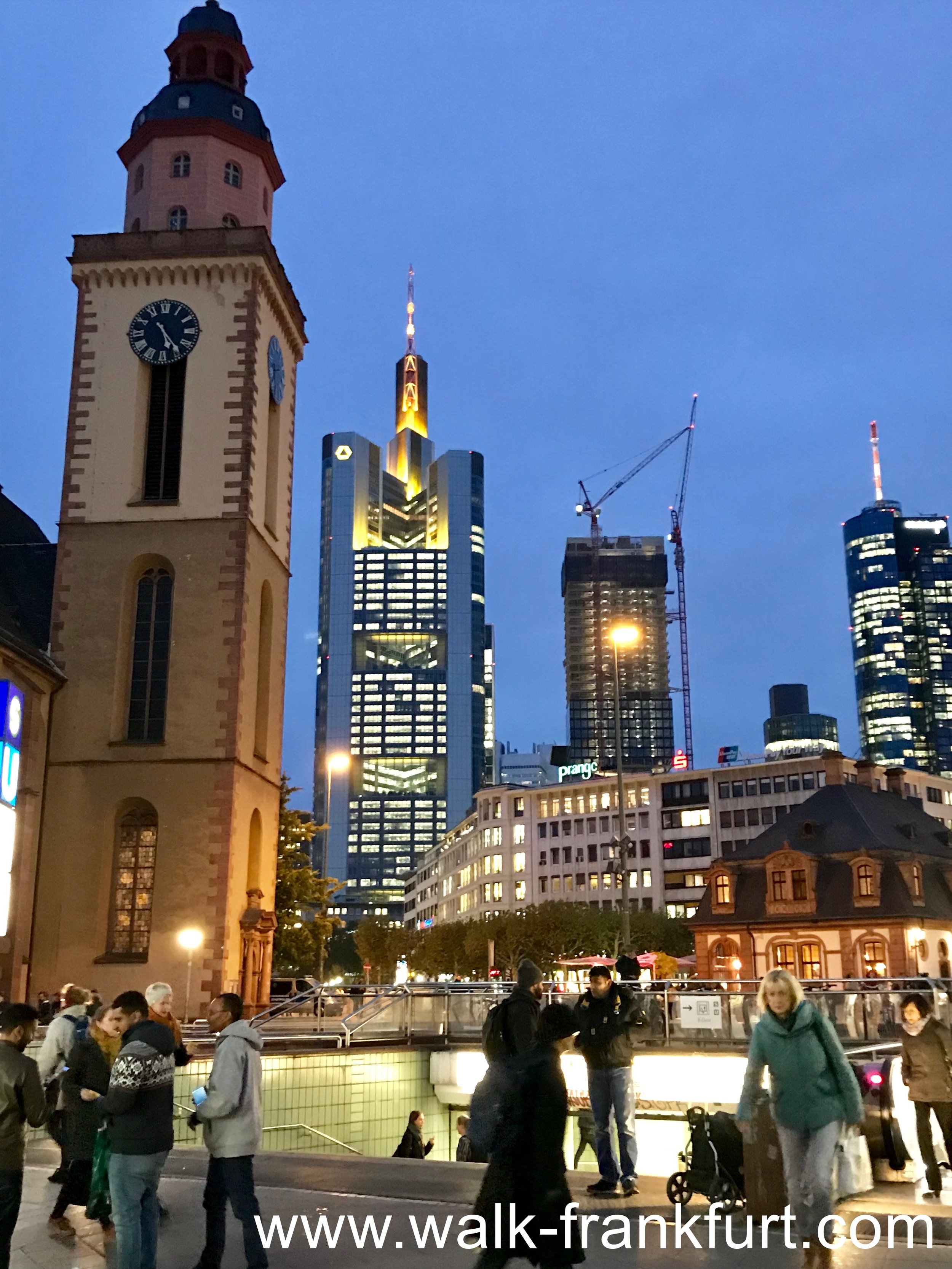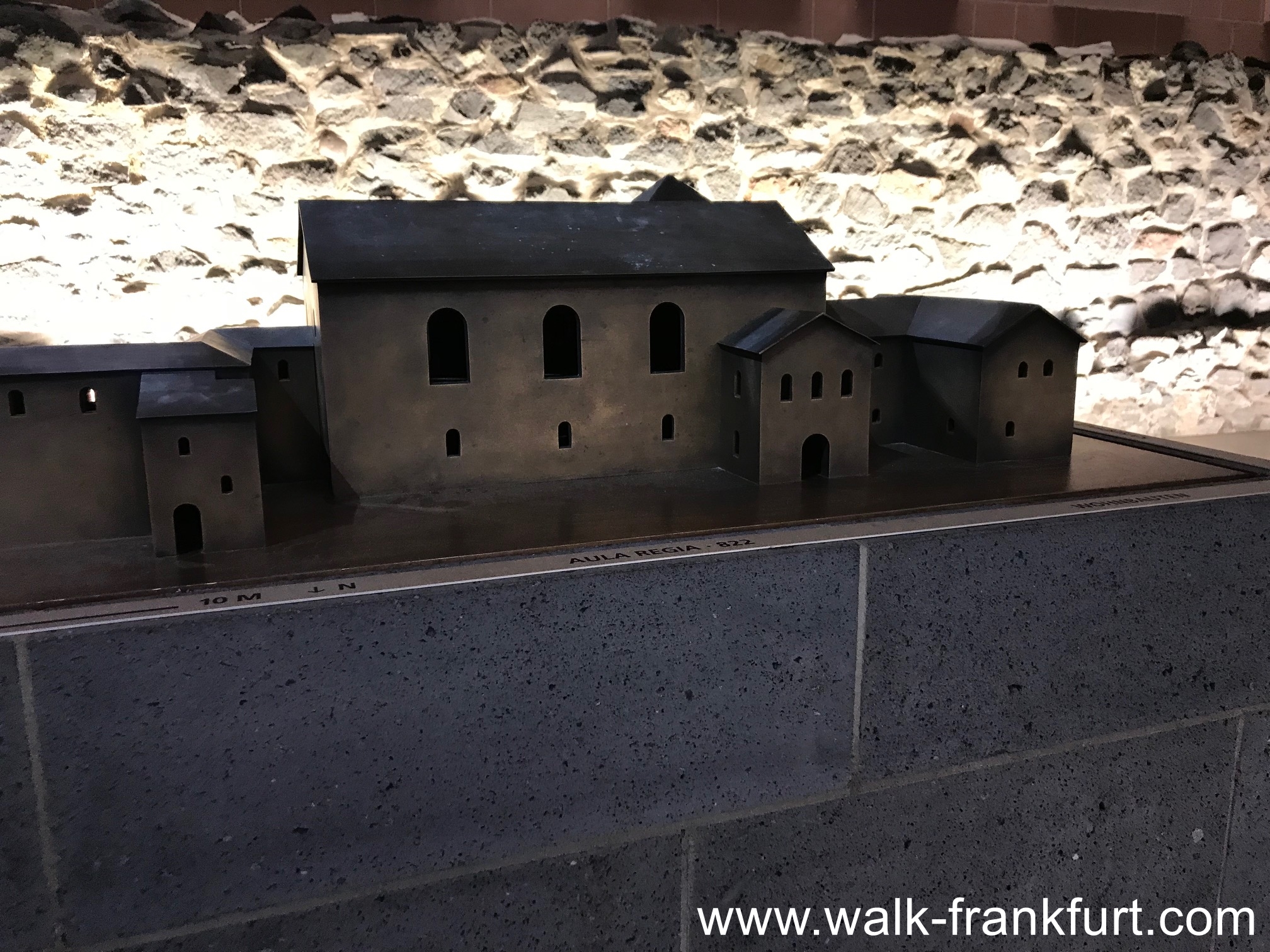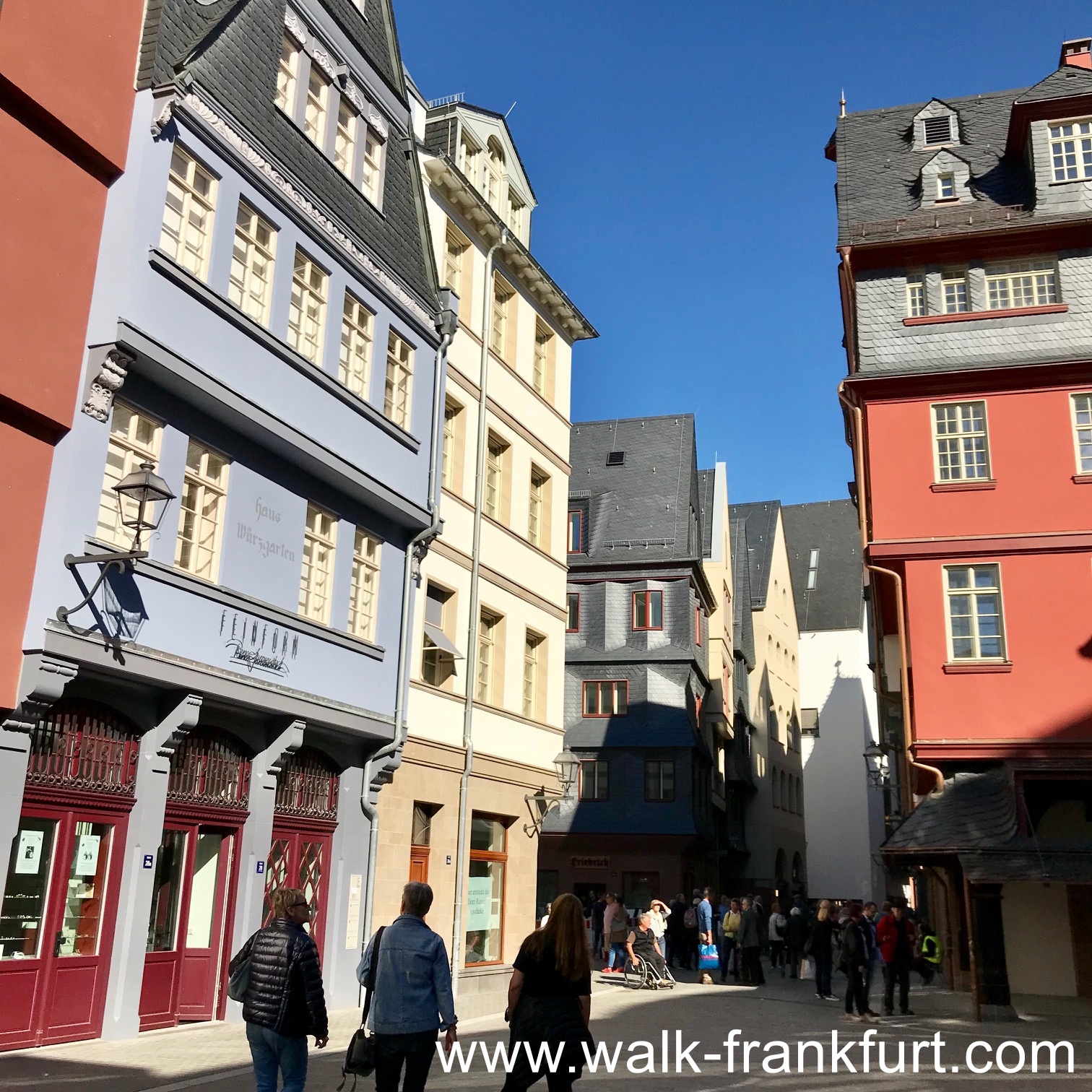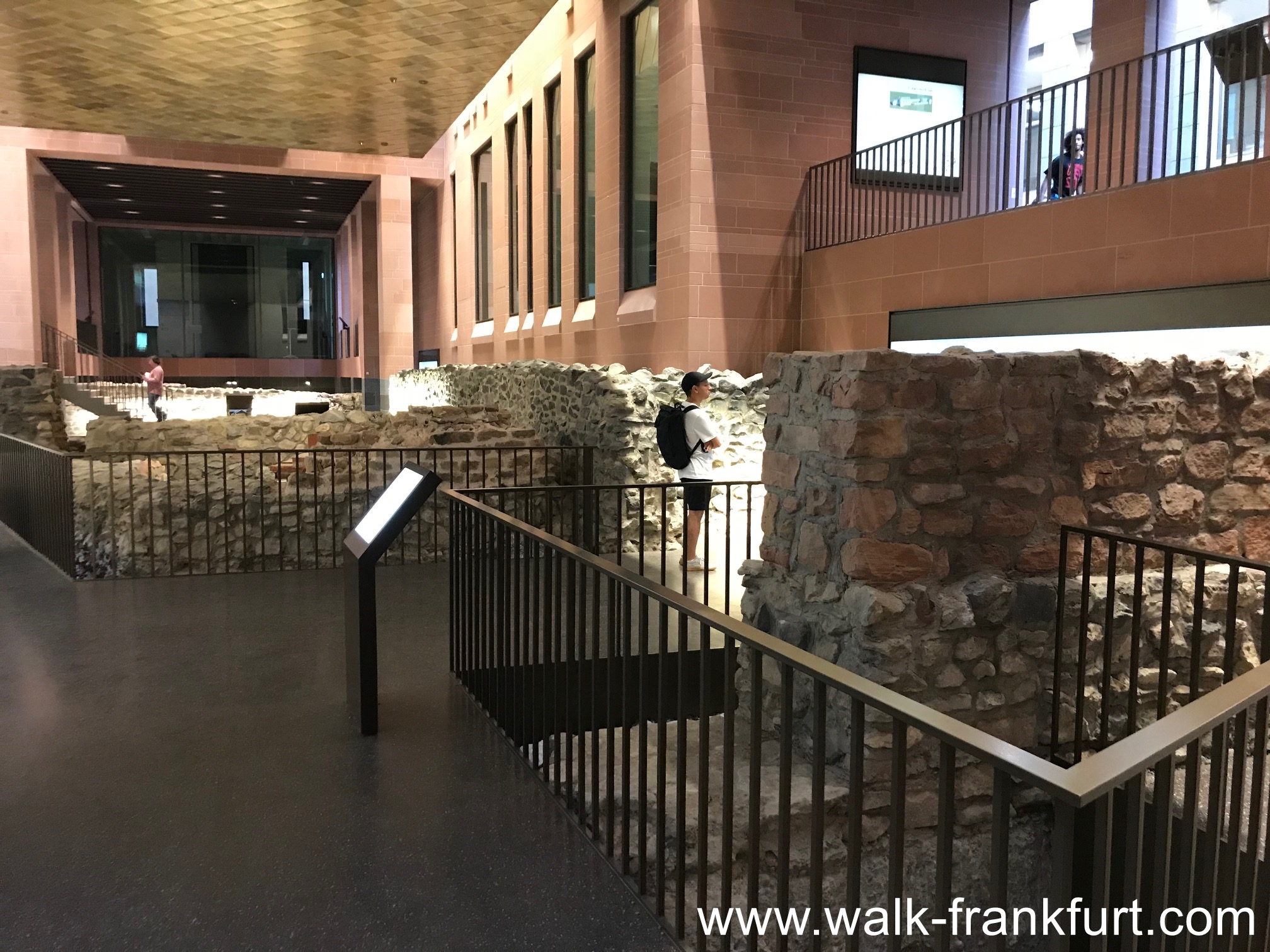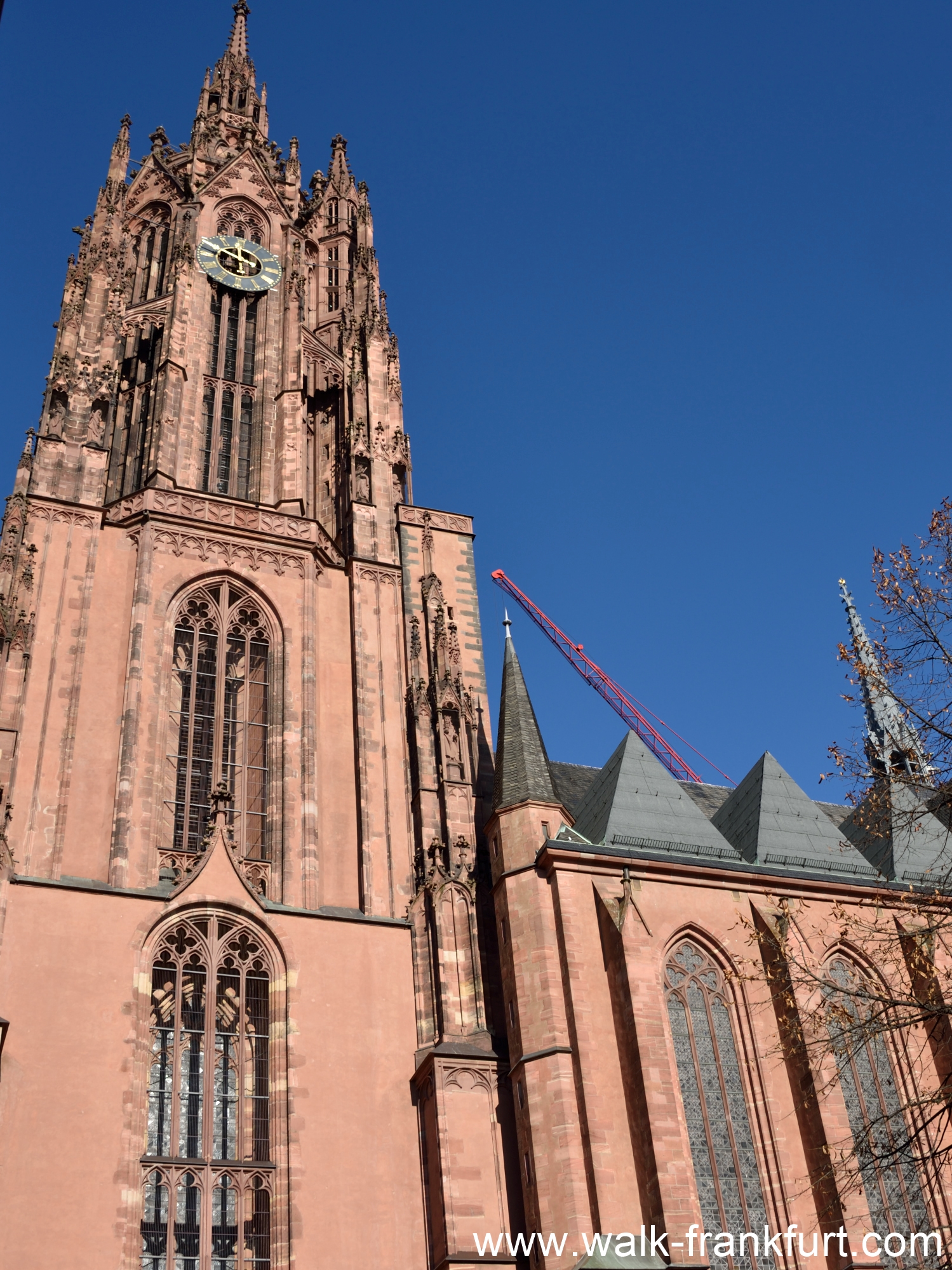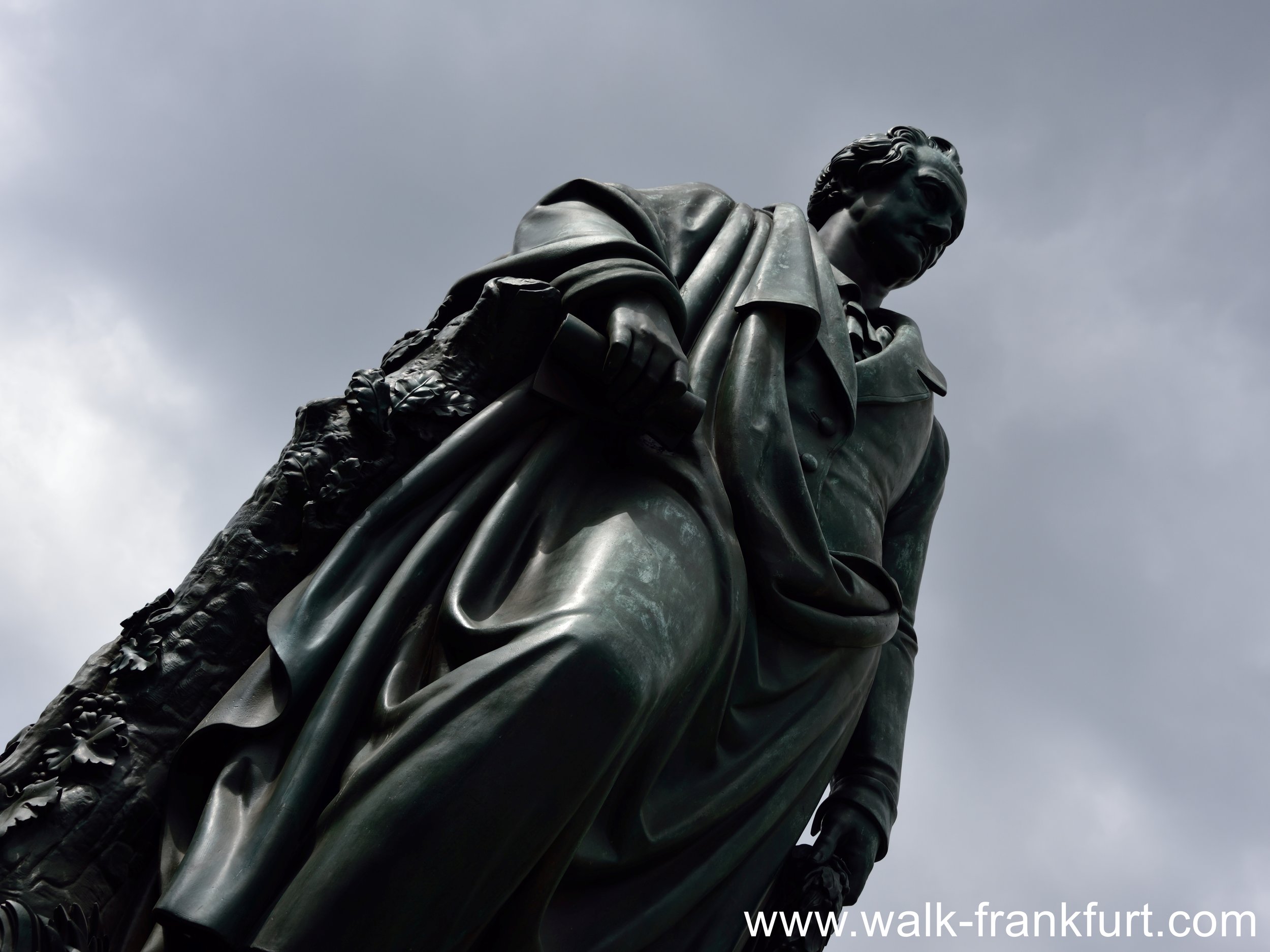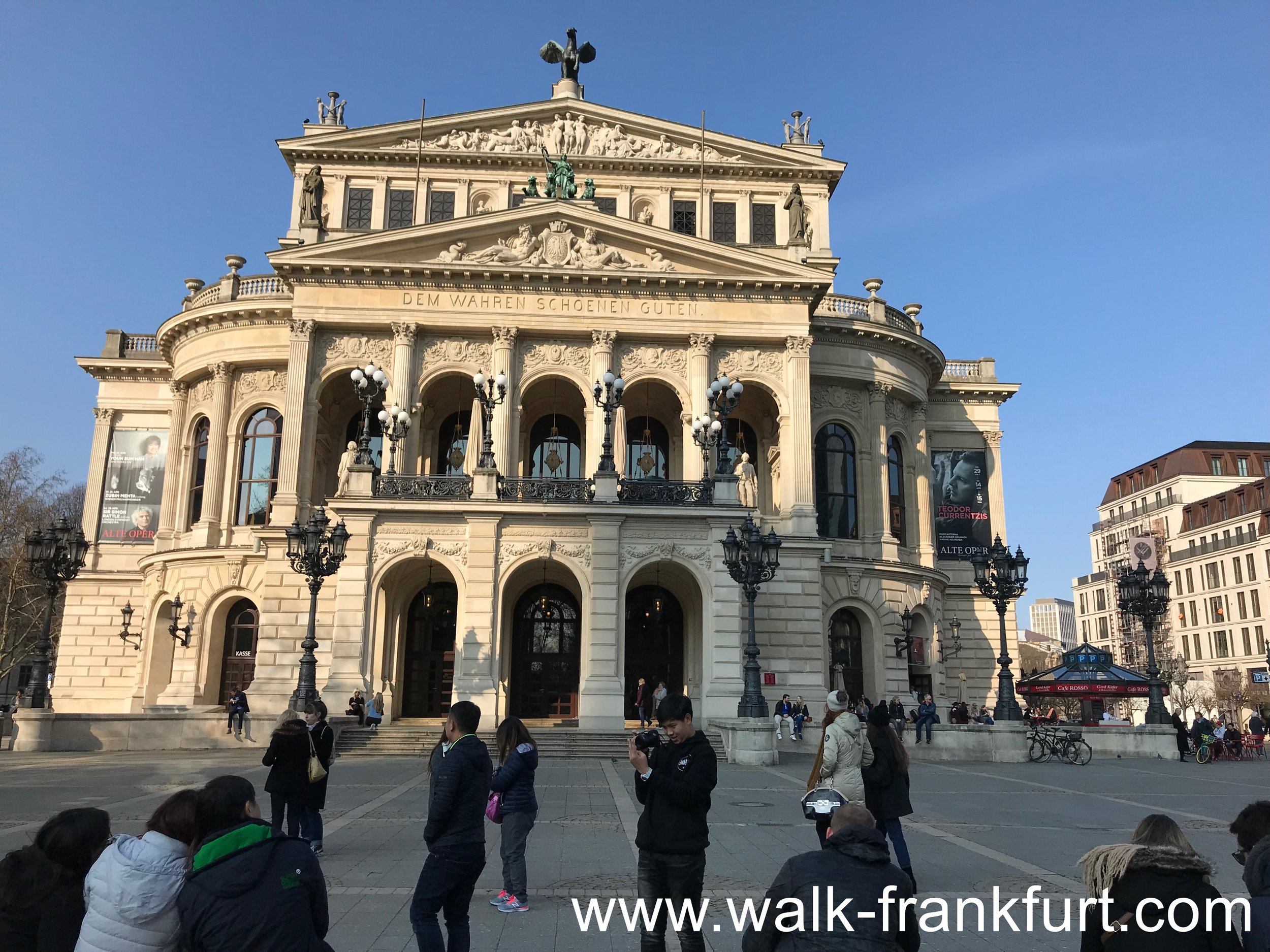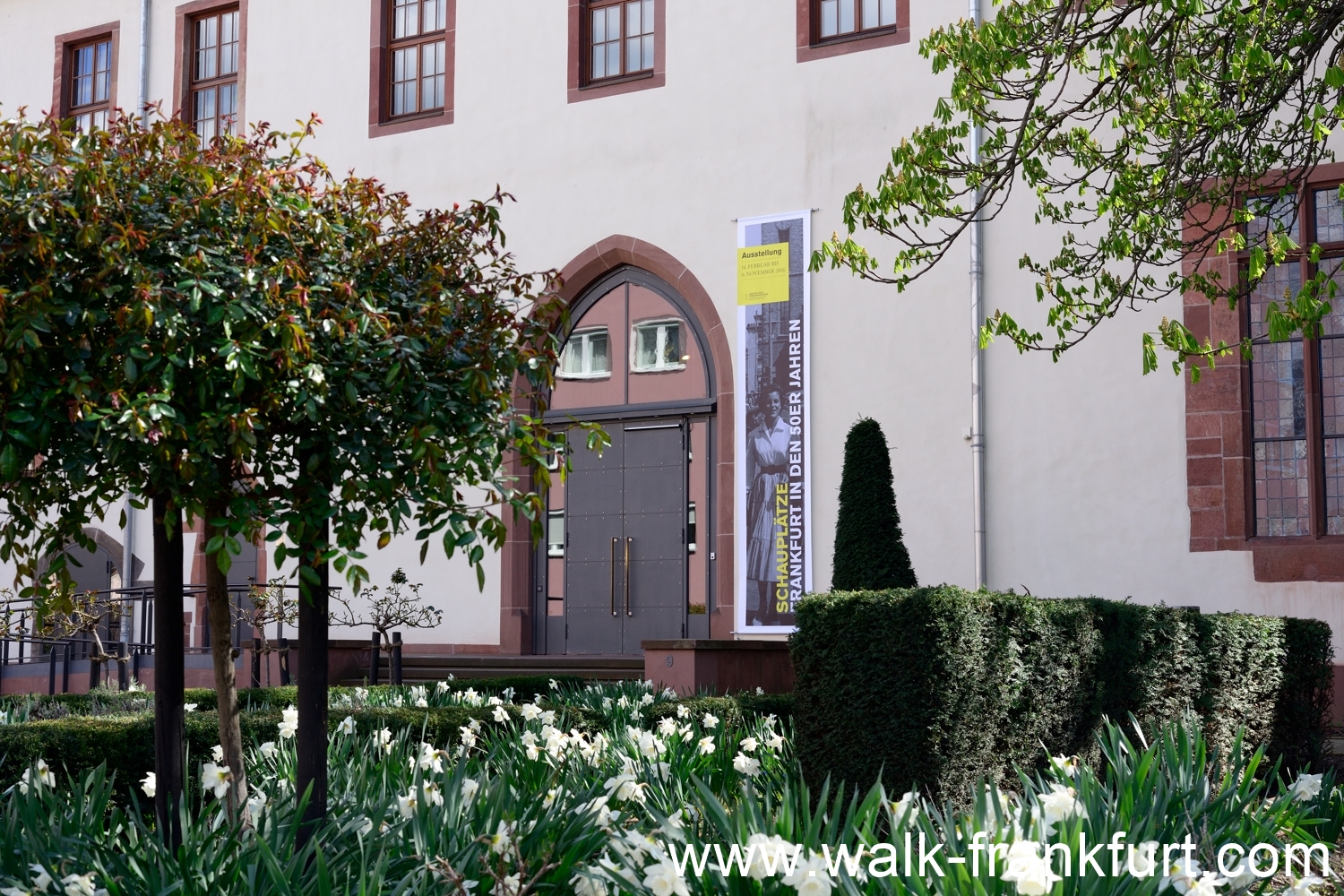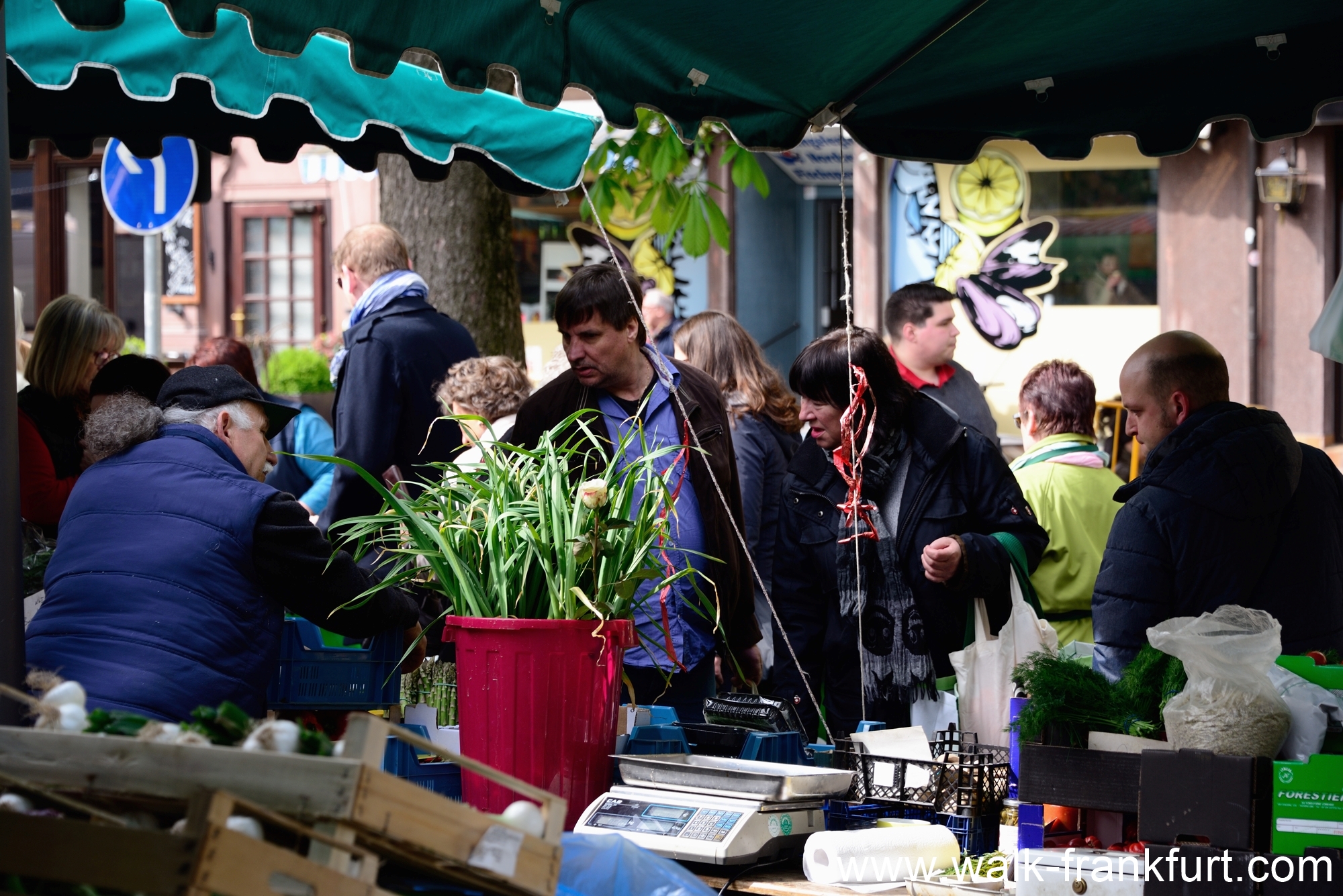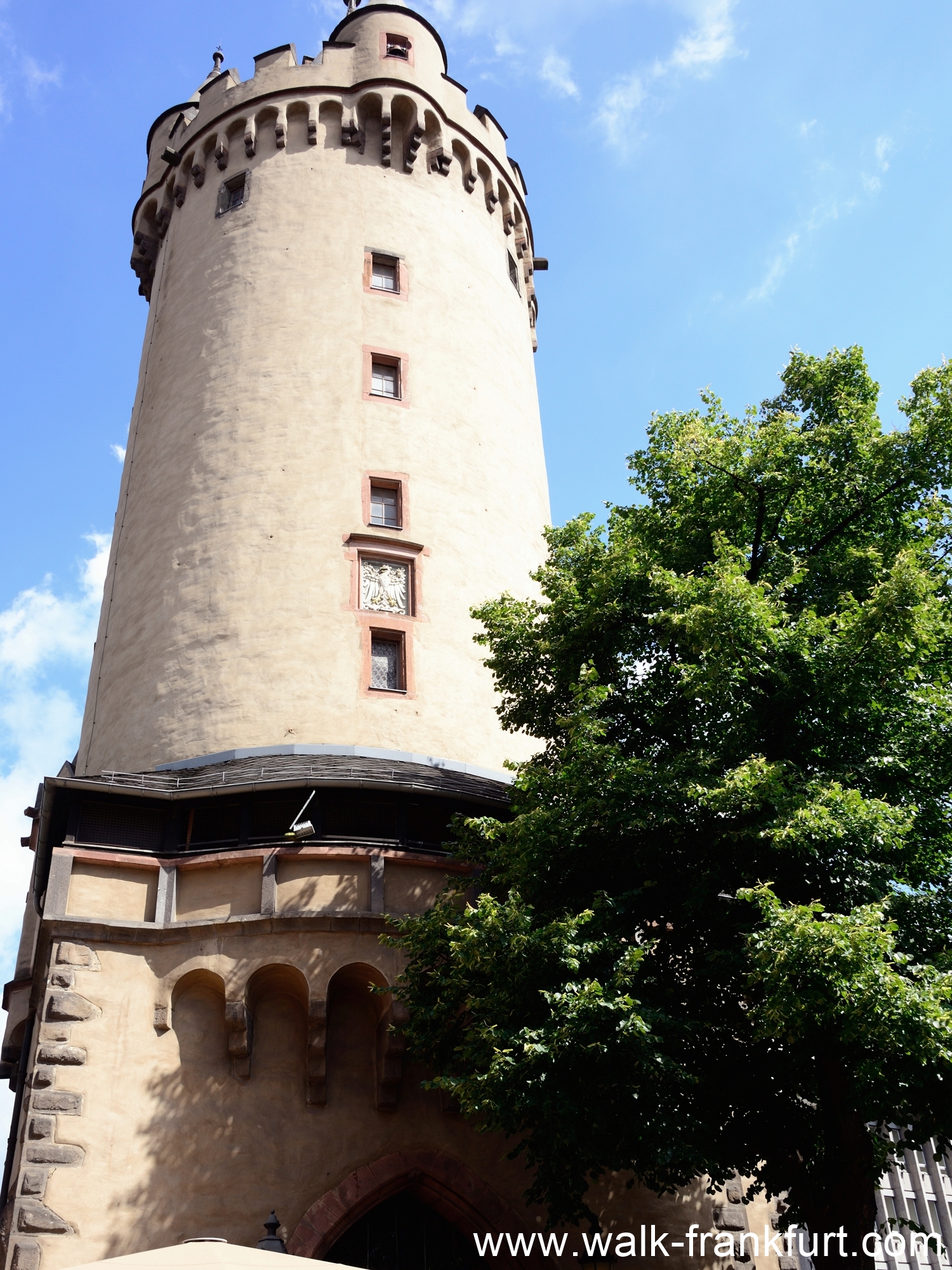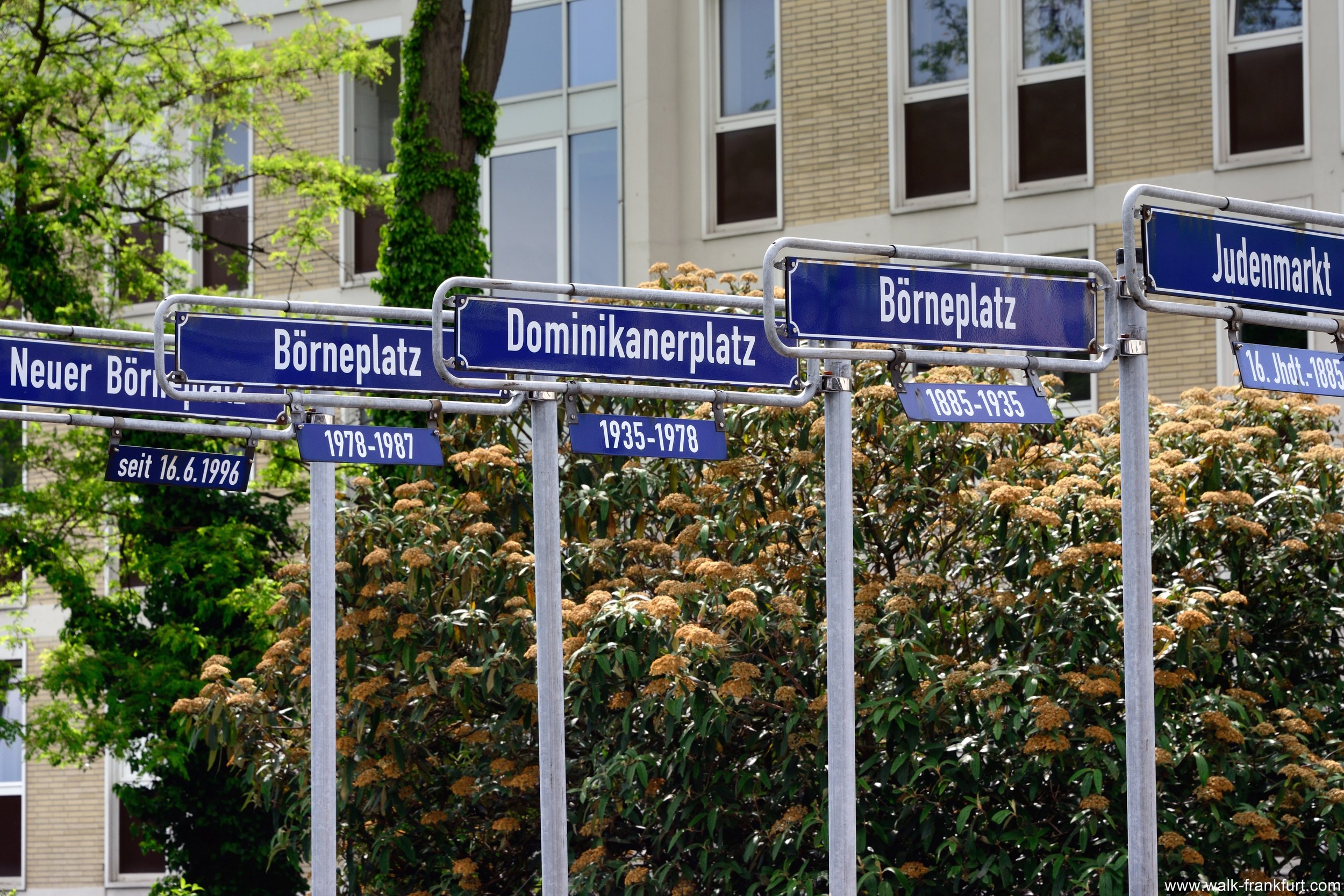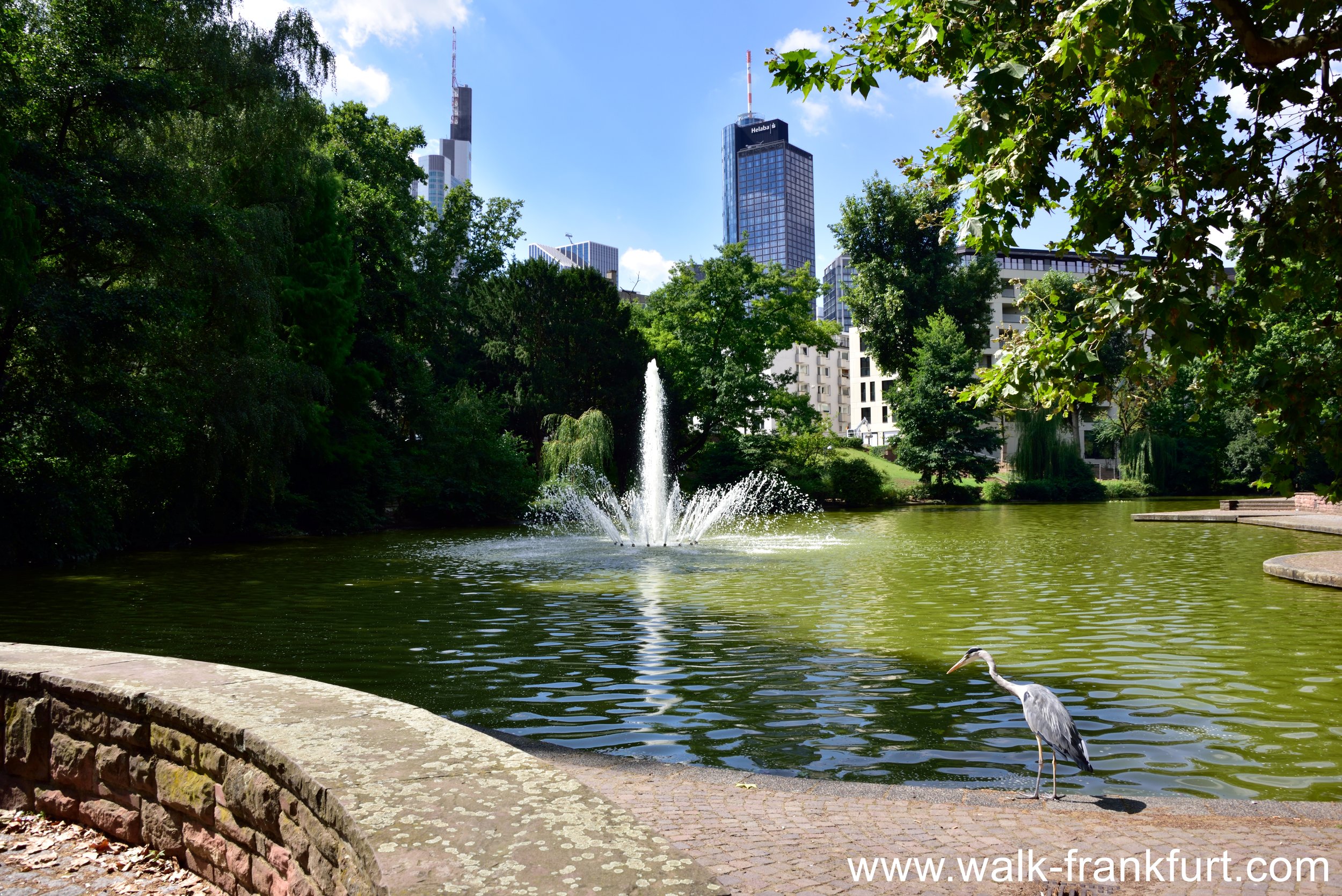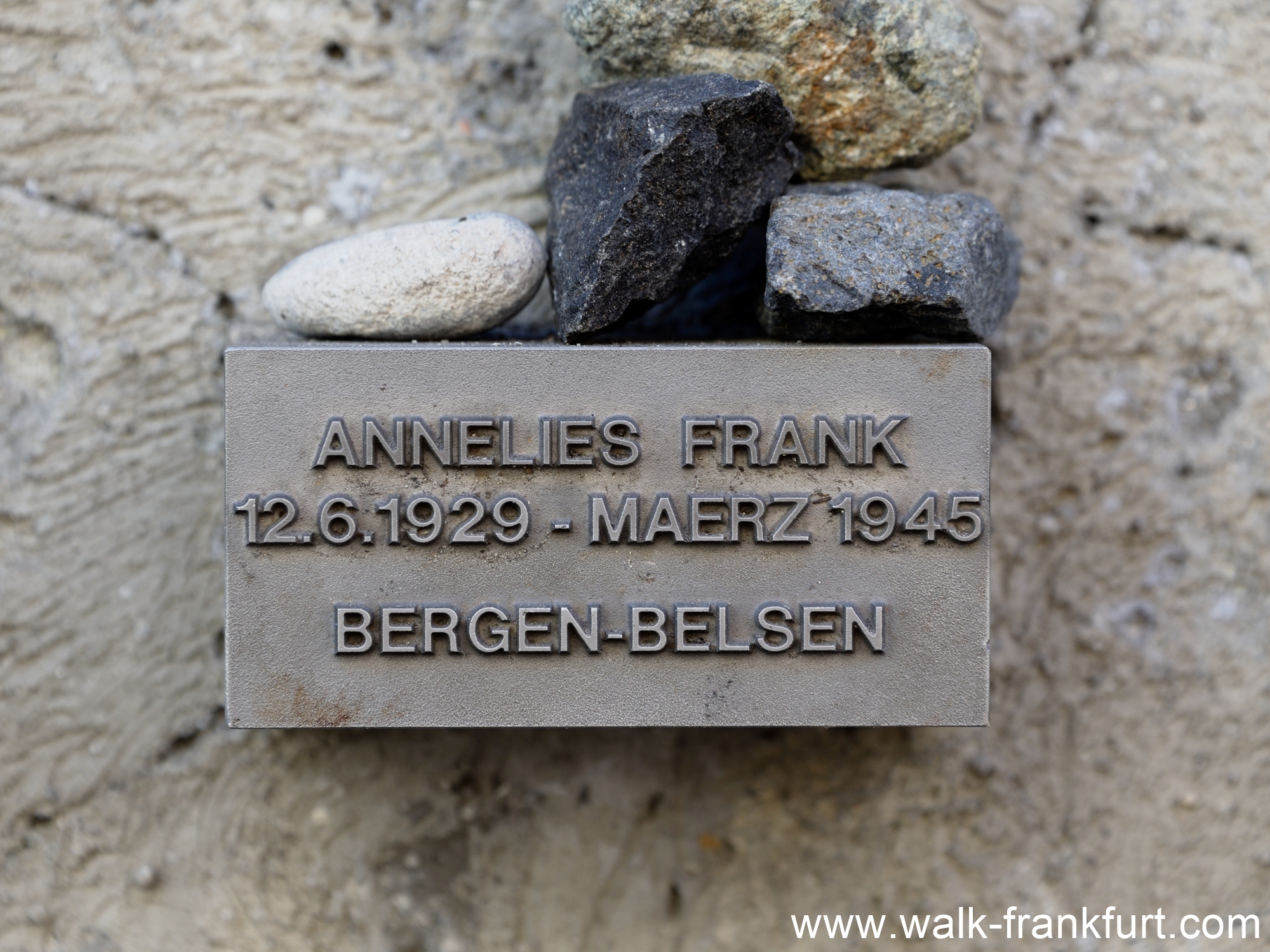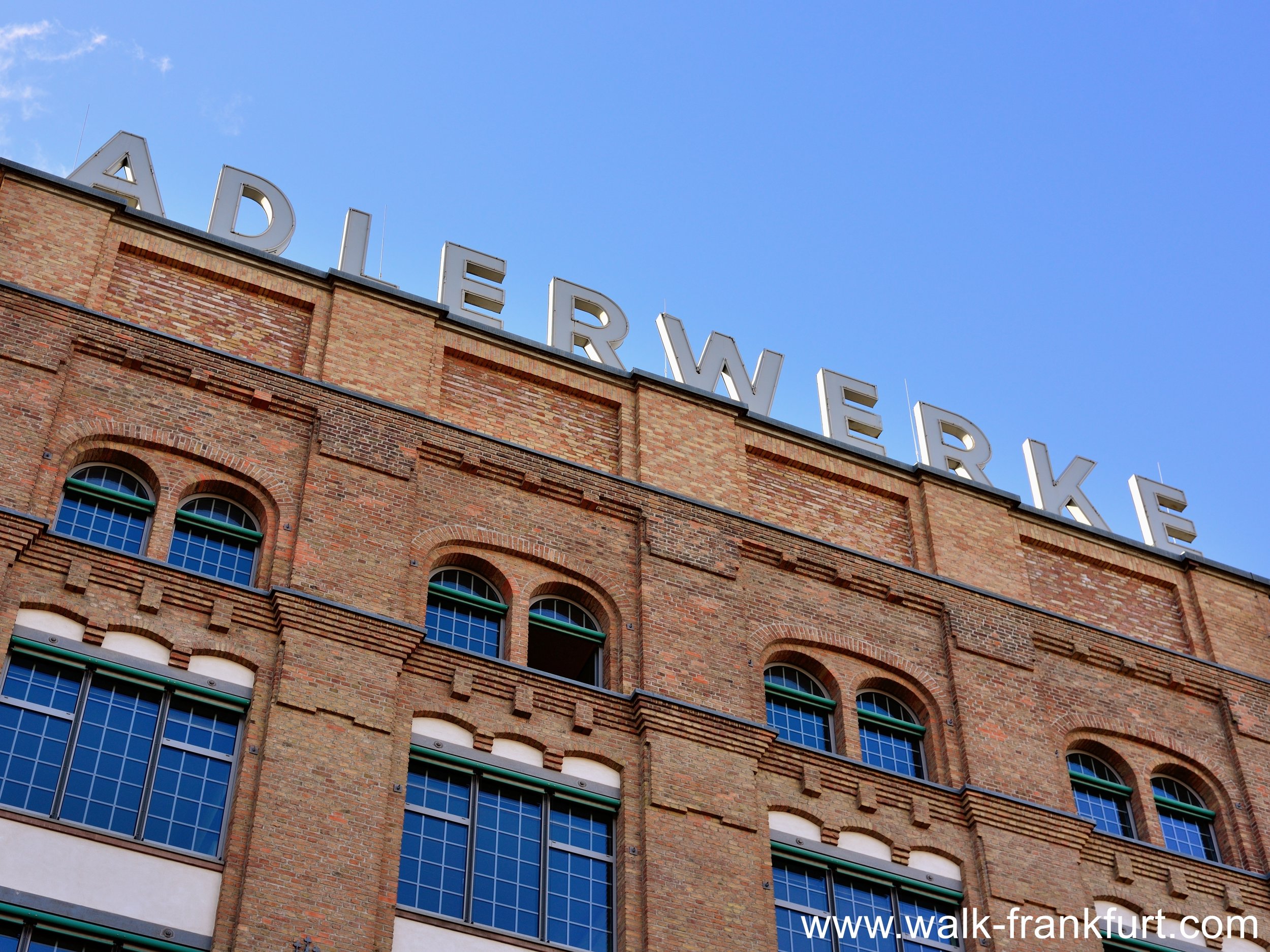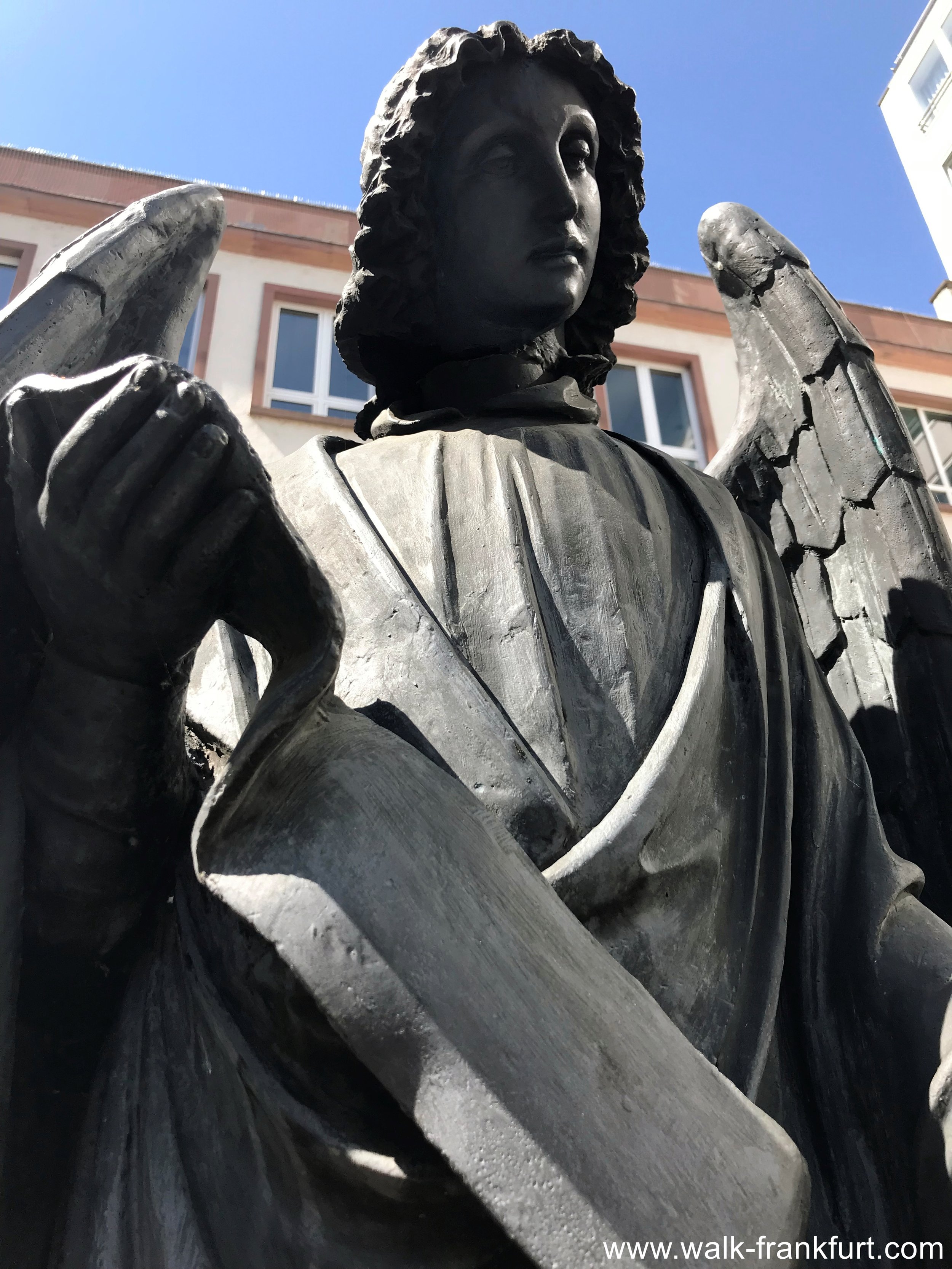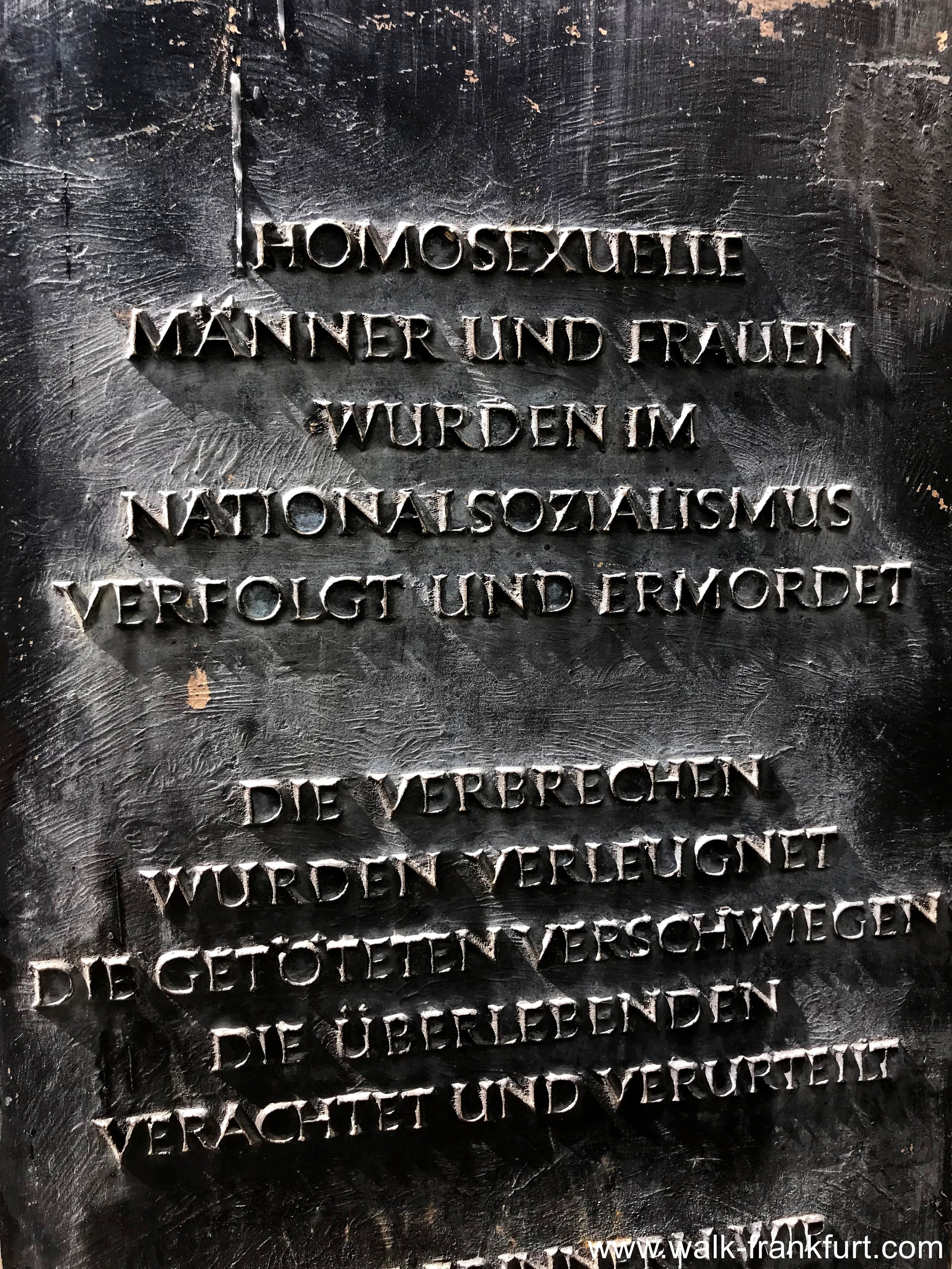Audio tour Frankfurt - Cafes, shops and other treats
Tips and hints on great places to eat, drink and be merry during the Frankfurt Old Town audio tour.
Updated 04.08.2024
The suggestions below follow the same route as the Voicemap audio tour for Frankfurt, plus a few extra hints and tips. If you spot a change, perhaps a new cafe you tried and liked, please, do leave a comment.
Listings
Key to listings: D - dining, C - cafe/coffee, Vg - vegan, TG - to go, W - wine
Along the tour route:
C Einsteins - (Römerberg 32) A bit like Starbucks, but it’s German, and very conveniently placed on the old town square. It keeps longer hours than most cafes in the area from 8am - 9pm.
C Kaffeehaus Goldene Waage (Markt 5) This is in the beautiful renaissance house, just opposite the cathedral. Cake and coffee are good, service is slow but coming here is all about seeing the beautiful renovations within. The cafe is also attached to the Friedrich-Stoltze Museum, free entry, which you will discover when visiting the cafe bathrooms!
D C Vg Metropol Kaffeeaus am Dom (Weckmarkt 13-15) I have an affection for this place. Home cooked food, great cakes and a garden that’s an absolute sun-trap. (Vegetarian and vegan goods too)
D Wirthaus am Hühnermarkt (Markt 16- 18, Hühnermarkt) In the heart of the New Old Town, the Wirthaus has a menu of traditional Frankfurt food and the quality is high. The pricing is a little higher too, but the setting is lovely and worth it.
C Hoppenworth & Ploch Altstadt (Markt 22, on the Hühnermarkt) Local coffee roaster. For those who like a flat white, this is the place to head to in the Old Town. Of course they have other drinks too! Next door is an excellent bakery.
W Balthasar Ress (Markt 13a, Hühnermarkt) Were you paying attention on the tour? Balthasar’s Weinbar is in the baroque, Grüne Linden, house on the Chicken Market! Balthasar’s produces it’s own wine close to Frankfurt in the Rheingau region. VDP quality wines that are worth trying. For a quick crib sheet on German wine terms, check out this link!
TG Metzgerei Dey - (Markt 13, Hühnermarkt) want to snack like locals do, whilst on the go? Grab a sausage from Dey’s. A family run delicatessen, here in Frankfurt since 1930.
D Badias Shirn Cafe Bar (Schirn Kunsthalle, btw Coronation Way and Bendergasse) Situated above the Coronation Way, Badias has a great selection of freshly prepared salads and dishes with a Mediterranean flair. Although not strictly gluten-free, it is possible to work around the menu and avoid gluten ingredients.
W C Wineschirn (Römerberg 8, directly opposite the U-bahn escalators, exit Römer) ) Another one of my favourites, Weinschirn has a lovely selection of German wines and a few from other lands too. Noted also for the delicious Flammkuchen and small plates of ham and cheese if you’re feeling peckish!)
C ConduitCouture (Fahrtor 1, by Haus Wertheim) On the way to the Iron bridge, queue up here and grab a fine piece of cake or a home made ice-cream. This patisserie makes all the classics, including the famous Frankfurter Kranz, a vanilla sponge with butter cream, jam and a nutty croquant. You can also buy packs of Bethmannchen here - the traditional Frankfurt, baked marzipan treats.
Schirn Art Gallery (Römerberg) modern art gallery offering alternating exhibitions. Check the website for details)
Kaisersaal (entrance on Limpurgergasse. Daily 10am-1pm and 2pm-5pm) The Kaisersaal contains 19th century portraits of all the Holy Roman Emperors. As you walked along Limpurgergasse, after seeing the eavedropping man and cat, you might have noticed a sign on the side wall of the town hall. It’s the entrance point to the Kaisersaal. Walk through the gates, turn right and walk up the the ornate stairwell to gain entrance.
Other recommendations
Not on the tour, but very close by
Braubachstrasse has quite a few cafes, and a couple of antique stores, and is worth exploring, a few highlights are below:
Key to listings: D - dining, C - cafe/coffee, Vg - vegan, TG - to go, W - wine
Handwerkkunst Frankfurt (Braubachstrasse 39 ) If you are looking for traditional German wooden decorations and souvenirs, this shop is close to the Römerberg.
C Iimori (Braubachstrasse 20) The best patisserie in Frankfurt for French bakery specialities and Japanese specialities too.
Fotographie Forum Frankfurt (Braubachstrasse 30-32) A small gallery for photography enthusiasts.
C D Margerete (Braubachstrasse 18) Good for lunch and afternoon coffee and cake. Sit out front and watch the world go by. IMO not so great for dinner.
C Zart & Bitter (Braubachstrasse 14) One for the chocolics! A shop selling all manner of chocolates!
C Mehl.wasser.salz (Domstrasse 10) is an excellent bakery with lots of seating, selling light breakfasts and lunches too - with vegetarian options.
Ice-cream
There are lots of ice-cream vendors around the old town but one stands out as better quality than the rest:
C Condit Couture (Fahrtor 1) A small Konditorei that also sells ice-cream in the summer months.
Kleinmarkthalle
Kleinmarkthalle (Hasengasse 5 -7) The indoor market has take out, wine, coffee and lots more. It’s a Frankfurt institution and locals hang out at Rollanderhof Wein on the 1st floor. It ‘s a very short walk from the old town. There is a second entrance from Ziegelgasse.
Heidelberg audio tour - cafes and other recommendations!
What makes Heidelberg so unique? Why does it feel so different to other German towns? Walking along the narrow streets you will hear how French troops burned Heidelberg to the ground and then about its re-birth as a baroque city, "beautiful and straight". The baroque features of the buildings then spring to life all around, as do the hidden remnants of the former medieval Heidelberg. Discover why there are so many madonnas in Heidelberg often perched above looking down upon the busy shoppers below and what the bronze monkey represents.
Student life features strongly in Germanys oldest university city:
- a student union canteen in an old medieval stable, - a dedicated student prison, - a new university building built around an old medieval witches tower, - a library in the architectural wilhelmian style, - famous students, both good and bad.
Heidelberg didn't escape the effects of World War Two either. Discover the book burning memorial and and stumble stones and the site of the old jewish synagogue, and who actually blew up the old bridge. Discover the influence the Americans have on this city too, both before and during the war.
Download the Voicemap tour and start discovering and exploring!
Updated 16.02.2025
The suggestions below follow the same route as the voicemap audiotour, downloadable by following the link, plus a few extra hints and tips. If you spot a change, perhaps a new cafe you tried and liked, please leave a comment.
Cafes etc.
Key to listings: D - dining, C - cafe/coffee, Vg - vegan, TG - to go, W - wine
Along the tour route:
D Vetters Alt Brauhaus - (Steingasse 9) A clasic brewery serving it’s own beers and hearty plates of German food. Open for lunch and dinner until late.
C, D, W Cafe Burkhardt (Untere Str. 27) Originally a wine bar Cafe Burkhardt is now the place to go for lunch or a bite to eat, especially for a choise of vegetarian food or gluten-free options.
C Ahmed's Middle Eastern Eatery (Untere Str. 23) Opening post lunch time and staying open until late, popular with the students, Ahmed’s serves very good falafel amongst other hearty plates of food. Plenty of vegetarian options.
D, C Rada Coffee & Rösterei (Untere Str. 21) For a great cup of coffee this is the place to head too. Home made cakes including gluten free options, too. Better still, they also offer gluten free lunch options.
C, TG OK Kool (Marstallstr. 7) The place for some great home made ice-cream, cakes and a good cup of coffee too, Limited opening hours, though!
C, TG, Moro Caffe & Thé (Haupstr. 160) Long time known as the coffee shop in Heidelberg. Stop here for a perfectly made cappuccino and a (large) piece of home made cake.
Slightly off the audio tour route:
D Mahmoud's Altstadt - (Merianstr. 3) Slightly off the audio tour track, but located on a nice quiet back street, Mahmound’s is known for it’s middle eastern food, fresh salads and falafel.
C Panno (Ingrimstr. 22) On the street leading to the funicular railway up to the castle, this tiny cafe serves excellent coffee and great cakes too. Very chilled!
D Kulturbrauerei (Leyergasse 6) Yes, it is popular with the tourists, but the Kulturbrauerei has a lovely garden in the summer months, and brews it’s own beer.
W Weinstube Witter (Hauptstr. 224) A lovely old wine bar, with a lovely choice of local wines by the glass, and some small bites for when you suddenly realised you’ve been here a lot longer and perhaps drunk a glass or two more than planned :-)
Souvenirs
Letter & Co (Untere Str. 24) for a slightly different Heidelberg souvenir, this shop proudly stocks Kaweco pens, a firm which was originally founded in Heidelberg 1883.
Käthe Wohlfahrt (Hauptstr. 124) a dedicated Christmas shop selling german made Christmas decorations all year round.
University Souvenirs (Augustinergasse 2) Purchase Heidelberg university t-shirts, mugs and hats at the Student Karzer.
Heidelberg Castle
A trip to Heidelberg is not complete without a trip to the castle. Walking up is one option and there are various routes, the most common being the path next to the funicular railway.
The grounds of the castle are free to explore and offer some lovely views. To enter the castle you will need to purchase a ticket. Alternatively take the funicular railway (Bergbahn) up and entrance to the castle is included.
The funicular railway can be found at the corner of Kornmarkt and Burgweg/Zwingerstrasse. Ticket prices and other information are detailed in the link.
Frankfurt Carnival (Karneval) Parade
Dates and a brief history of the Frankfurt Kareval (carnival), including the route of the carnival parade.
Frankfurt Karneval Parade
The date of the Karneval parade relates to Lent and therefore changes each year, in 2025 the parades are on the 1st and 2nd of March (see further dates below). In Frankfurt the main parade takes place on a Sunday and commences at Westhafen and takes the following route to the Römerberg:
Untermainbrücke - Neue Mainzer Straße - Friedensstraße - Kaiserstraße - Roßmarkt - Goetheplatz - Rathenauplatz - Biebergasse - Hauptwache -Katharienenpforte - Bleidenstraße - Liebfrauenberg - Töngesgasse - Fahrgasse - Battonnstraße - Kurt-Schumacher-Straße - Fahrgasse - Braubachstraße - Römerberg
Route of the carnival parade through Frankfurt city centre.
Childrens Karneval Parade
On the Saturday before the main parade Frankfurt hosts a Children's Karneval Parade, usually starting at Hauptwache and walking through to the Römerberg.
"Frankfurt Helau!" at the Karveval Parade
Karneval History
In Germany carnival is associated with the predominantly Roman Catholic states. Frankfurt however, maintains it’s carnival tradition because of historical ties to the Holy Roman Empire as both the election and coronation city of the Emperors. Today in Frankfurt the celebration mainly takes place in the form of parades and is a fun event for adults and children alike. For a full-on carnival experience head to the Rhineland cities of Köln, Düsseldorf and Mainz. The extensive festivities developed in these cities as a way of being subversive towards the occupying forces, e.g. the Prussians and the French, during the early 1800's. It was an opportunity to parody the occupiers and the military and still today parades march by with people dressed up in military costumes.
Carnival officially commences on 11th November at 11:11, but the key celebrations start on the Thursday before the beginning of Lent and end by Shrove Tuesday. The main event is the street parade. Highly decorated floats pass by throwing sweets for the children and marching bands, some dressed up in military uniforms and others in garish costume, provide musical entertainment. The crowd joins in by dressing up too.
Why do parades start at 12:11pm?
Why start a parade at 12:11pm and not 12 o'clock? One theory is the the number eleven, pronounced "elf" in German is an acronym of the French revolution cry of egalité, liberté, fraternité and the number 11 was a reference to the struggle of the German states, who in the early 1800's, were demanding democracy and liberty from the ruling classes.
Happy Karneval everyone! PS: Listen out for the traditional Frankfurt carnival cry of "Frankfurt Helau!"
Future Karneval parade dates
2024: February 10th - 11th.
2025: March 1st - 2nd.
2026: February 14th - 16th.
2027: February 6th - 7th.
That's right, just trundle your canon across the town square, why don't you!
A tour of Frankfurt with Walk Frankfurt
A description of the typical sights that Frankfurt has to offer on Walk-Frankfurt walking tour.
There are lots of great things to do and see in Frankfurt. History lovers will enjoy the old town with stories dating back to Roman times, through the middle ages and into the 1800’s. The modern shopping heart of Frankfurt offers a wide variety of shops, quickly accessible by foot, and foodies will love the daily indoor grocery market and the farmers markets hosted at the end of the week.
To answer the frequently asked question, “what will I get to see on a tour?”, I’ve listed the sights below, and most popular tour duration’s, to help you decide what you would like to see on your tour.
A 90 minute tour
This tour focuses on the old town, but also brings you to the Zeil, the modern shopping heart of Frankfurt. The sights are:
Römerberg - the main square with the beautiful town hall. This is the heart of the old town.
River Main and Eisenersteg - views up and down the river including views of the European Central Bank (ECB) and other skyscrapers.
Haus Wirtheim - the only remaining, in tact, 17th century house on the Römerberg.
Alte Nikolai church - a small church with foundations from the 12th century and 20th century stained glass windows by Lina von Schauroth.
New old town - 35 newly developed buildings bring back to life a part of the old town destroyed in World War II.
Roman remains and the Holy Roman Emperors Kaiserpfalz - historic remains, highlighting the importance of Frankfurt throughout the centuries.
Kaiserdom - the Emperor’s cathedral. The place of the Holy Roman Empire elections and coronations.
Paulskirche - the starting point of German democracy. Open to the public from 10am - 5pm.
Kleinmarkthalle - the indoor market. The place to sample traditional Frankfurt boiled sausage and local wine too!
Hauptwache - the former 18th century police station and heart of Frankfurt’s modern shopping centre.
Deutsche Börse - the old stock exchange and formerly the heart of the banking quarter.
A 2 hour tour
A two hour tour includes the sights listed for the 90 minute tour and extends to include some of the options below. Unfortunately you won’t have time to visit all the options below, so it depends on what you would like to see:
Goethe’s house - literature fans will appreciate the chance to visit Goethe’s place of birth (although there is an entrance fee to visit inside.
Goetheplatz - a statue dedicated to the author and an area of “high-end” shopping.
Fressgass’ - a street of eateries and, in the summer, some great festivals.
Alte Oper - the old opera house. Beautiful renaissance architecture at the western end of the city centre.
Carmelite cloister - open to the public and displaying the 16th century fresco by Jörg Ratgeb.
*Outdoor markets - Konstablerwache and Schillerstrasse
*Farmer’s market are hosted from Thursday to Saturday. They offer a unique piece of Frankfurt life where you join the locals in a glass of apple wine and a bratwurst.
A 3 hour tour
A 3 hour tour will suit you if you want to take a more leisurely pace through the sights of Frankfurt, perhaps stopping for a coffee or even a glass of wine at the indoor market. If you are energetic, and want to achieve your 10,000 steps a day, in 3 hours you can cover all the sights above and also include:
Eschenheimer Tor - a remnant of the original medieval wall and a classic piece of 14th & 15th century architecture (the tower being attributed to Madern Gerthener)
Bockenheimer Anlage - a beautiful park, leading to the old opera house, following a path that used to be the 14th century city battlements.
Memorial to the Jewish victims of the holocaust - to the east of the city is the old Jewish cemetery and memorial.
Frankfurt New Altstadt
In September 2018 Frankfurt celebrated the official opening of the "new" Altstadt. This incredible development reflects architectural styles spanning six centuries. Of the 35 buildings which make up this new quarter, 15 of the houses have been authentically recreated whilst the other 20 properties have a modern contemporary style. The whole project was funded by the city costing 200 million euros and was over 12 years in the making.
Pre-war the old town was an area of 28,000m² and was the most expansive medieval old town in Germany. However, on March 22nd 1944, the bombs rained down. The timber-framed, medieval houses, were not able to withstand the fires, resulting in 80% of the old town being destroyed.
Frankfurt wanted to rebuild itself as a modern city and by 1974 the Technische Rathhaus (technical town hall) took pride of place between the cathedral and the Römerberg. However, there was little love for the building’s brutalist architecture so when it was voiced that the building was to be demolished, the locals wasted no time in petitioning for a sympathetic redevelopment of the old town to represent what stood here before the war.
Today the old town is 7,000m² and is only a quarter of it's previous size. The new development brings back to life former times from the Romans, to the Kaiserpfalz of the earliest Holy Roman Emperors, and the centuries of architecture that followed.
Underneath the Stadthaus, and open for the public to view, lay the old Roman ruins, walls of the former Kaiserpfalz and some of the earliest medieval cellars.
Two of the old trading yards, Hinter dem Lämmchen and Hof zum Rebstock have been beautifully re-crafted, and after 70 years of being blocked, the Coronation Way, Krönungs Weg, is once again a thoroughfare for the public to retrace the steps of the newly crowned Holy Roman Emperors from the cathedral to the Römerberg.
The Hühnermarkt is the hub of the quarter, with the gothic Neue Rotes Haus ready to house "schirns" of yester-year and the Esslinger Haus, with it's reference to Tante Melber, an aunt of Germany's most famous author Johann Wolfgang Goethe. The baroque Grüne Linden, on the south side of the market place, houses the Balthasar Wein Bar offering quality German wines to thirsty passers-by. Meanwhile, on the east side, a row of classicist housing has been recreated. In the centre of the Hühnermarkt stands the fountain dedicated to Friedrich Stoltze, a local satirist and activist of the 1848 democratic movement.
The most outstanding house, the Goldene Waage (the Golden Scales) stands opposite the cathedral. It cost €8 million to authentically recreate both inside and out. This replica 17th century renaissance house is to be managed by the Historical Museum and is open to the public as a cafe and it also has internal access to the Stoltze Museum next door, in house Weisser Bock..
Take some time to explore the new town. Better still, come on a Walk-Frankfurt tour and get the full details and stories of what life was really like here throughout the centuries.
International Holocaust Remembrance Day - January 27th
Eleven million victims
"By 1945, Germany had murdered over eleven million people in Europe: political prisoners, Roma, homosexuals, the disabled but in numerical terms, overwhelmingly - around six million - Jews." (MacGregor, 2014, p509)
I hope Neil MacGregor doesn't mind me opening a blog page with a quote from his excellent book, Germany: Memories of a Nation.
During my work as a tour guide the majority of people I meet, from all over the World, earnestly believe that 6 million people where murdered during the holocaust. It shocks them to discover the number was closer to 11 million and that there were other groups who were actively victimised with the ultimate aim of annihilation. Frankfurt commemorates all. Memorials have been erected by the local council, by artists, companies, societies and by families of the victims, which exist around the streets of the city and exhibits are regularly put on public display as timely reminders.
Stolperstein - Stumbling stones
By simply looking down on the ground you will sooner or later stumble upon a stumbling stone. Stumbling stones are an art initiative by Gunter Demnig, "...that commemorates the victims of National Socialism, keeping alive the memory of all Jews, Roma and Sinti, homosexuals, dissidents and Jehovah's Witnesses and victims of euthanasia who were deported and exterminated." The commemorative brass stones are placed in the ground outside the last chosen residence of the victim with the opening words, "Here lived...", followed by a short narrative of the victim's fate. Frankfurt has it's share of the 61,000 stumbling stones which can be found across Germany, Austria, Hungary, the Netherlands, Belgium, the Czech Republic, Norway and Ukraine.
Katharina Schmid's stumbling Stone (Stolperstein) murdered for being a Jehovah's Witness.
Adlerwerke "Katzbach" - the concentration camp in Frankfurt
During World War Two a concentration camp existed the centre of Frankfurt, KZ-Katzbach at the Adlerwerke. Up to 1,600 victims were worked to death and by March 1945, as the defeat of the Nazis became a reality, the workers who had survived the atrocious working conditions were sent on a death march to Buchenwald and thereafter onto Dachau. Amongst them were Polish people arrested after the Warsaw uprising and German objectors to the National Socialist government. On the Adlerwerke building today hangs a memorial plaque to those victims so they are not forgotten. More information about the camp, albeit in German, can be found on the official KZ-Alderwerke website.
Roma memorial
On Braubachstrasse, hanging on the wall by number 20, is a memorial dedicated to the Roma people of Frankfurt who fell victim to the racial policies of the Nazis. It's a simple memorial but, nevertheless, it is there detailing the murder and sterilisation of the Roma. Last summer I also had the privilege to meet a man tending a grave in the Frankfurt cemetery. As I paused to look he called me over and explained the grave, he was so lovingly caring for, was that of his grandmother, a Roma, incarcerated at a concentration camp and who had survived the holocaust.
The Grey Buses
Another poignant memorial is that to the physically and mentally disabled victims of the holocaust. The image of a grey bus symbolises the collection and deportation of disabled people, deemed unworthy by the National Socialists, to one of six killing centres in Germany. One of these killing centres was located 80km north of Frankfurt, in Hadamar. The organised euthanasia program, named Action T4, systematically murdered 70,000 people. However, it is believed institutions practised localised euthanasia and, in total, between 1939 and 1945 approximately 300,000 mentally and physically disabled people were murdered. The Grey Buses exhibitwas temporarily located in Frankfurt on Rathenauplatz/Goetheplatz in 2018.
The Frankfurter Engel
In 1994, the Frankfurter Engel was the first memorial in Germany to commemorate the persecution of homosexuals during the National socialist era. Men were targetted in greater numbers than women. Many were worked to death, others were forcibly experimented upon in order to find a "cure" for their condition. The Frankfurter Engel - the Frankfurter Angel, stands on the corner of Schäfergasse and Alte Gasse.
Jewish memorial at Neue Börneplatz
Since 1996 Neue Börneplatz, Frankfurt has been a dedicated memorial to the Jewish citizens who were murdered during the holocaust. The area was formerly the site of the Jewish market and the Börneplatz synagogue which was razed to the ground during Kristallnacht (11th November 1938). The wall around the old Jewish cemetery, also at this site, displays 11,915 steel plaques which individually name each and every Jewish citizen of Frankfurt who was exterminated.
Further out of the city centre are other Jewish memorials. The most recent is the at the European Central Bank (ECB). Part of the building structure makes use of a former warehouse which used as a collection point from where the local Jewish people were forced to board trains and deported to their deaths. The signal box and railway lines outside the building, on public land, have been left as a reminder of the deportations. Within the ECB building a stark concrete ramp leads to the basement of the building, the former the collection point, with inscriptions from the victims and observers.
Details of the other Jewish memorials can be found using this link to Jewish Sites in Frankfurt.



